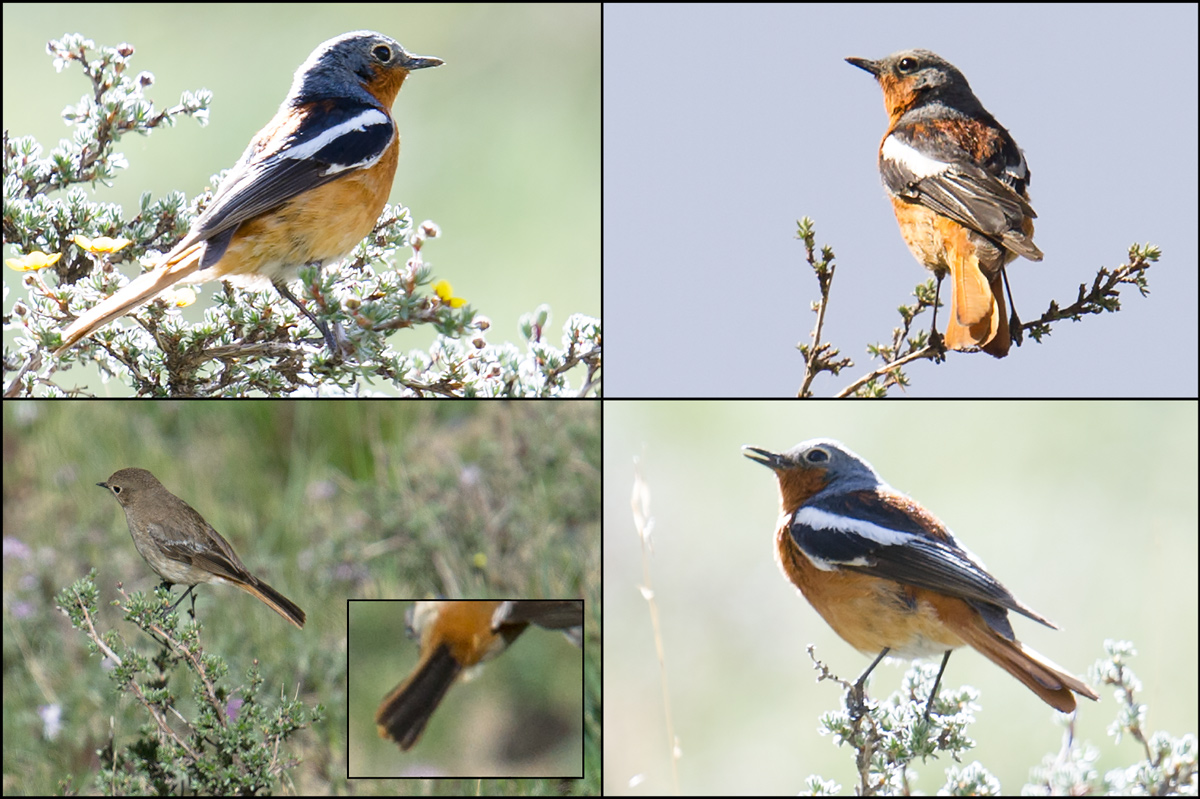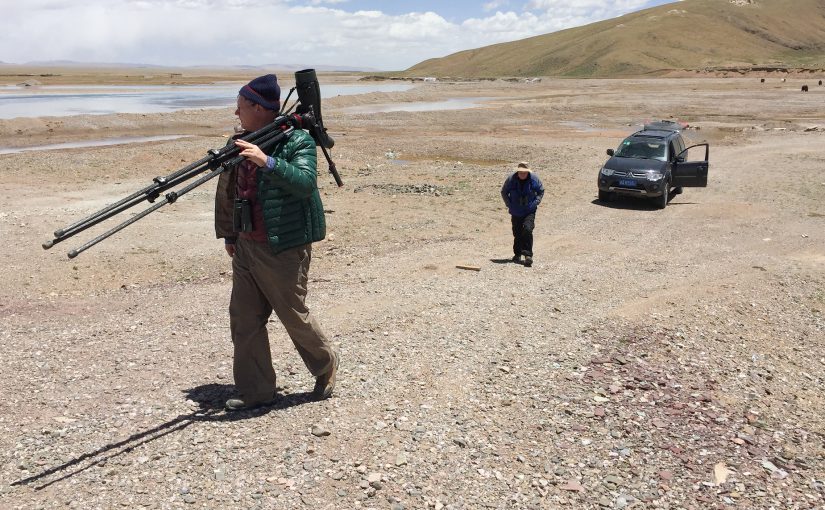by Craig Brelsford
Founder, shanghaibirding.com
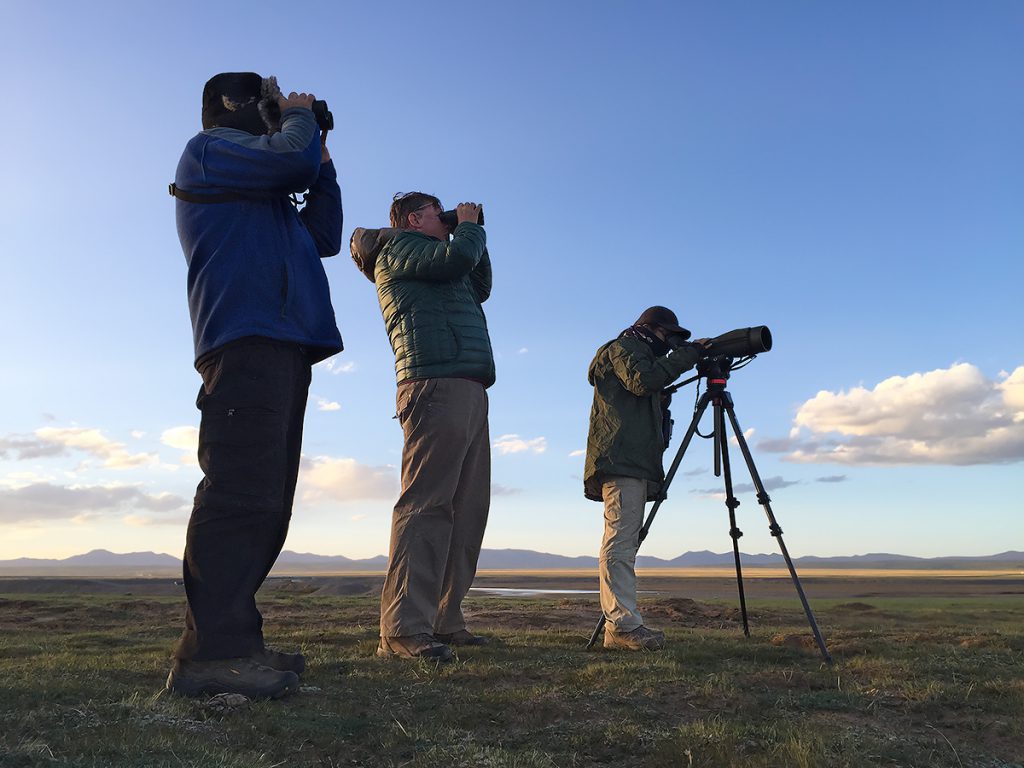
Elaine Du and I spent the first two weeks of the Qinghai birding expedition, 26 June to 10 July 2016, with Shanghai-based British birder Michael Grunwell and his old friend Mark Waters. We covered a vast area, ranging from Huzhu County on the Gansu border in northeast Qinghai to Ga’er Monastery (31.829966, 96.487758) in southern Qinghai, near the border with Tibet.
Among the 136 species of bird we found were 40 of Michael’s 45 hoped-for lifers. Highlights:
2 Red-crested Pochard at Eling Lake (34.902685, 97.709949), near source of Yellow River
226 Common Merganser at Eling Lake
1 Przevalski’s Partridge at “Przevalski’s Site” (36.457249, 98.502578), a birding area in the Dulan Mountains, elev. 3820 m (12,530 ft.)
7 Tibetan Partridge at nunnery (32.291641, 96.512173) in Kanda Gorge, at mouth of Kanda Gorge (32.277059, 96.485171), and along Mekong (Zaqu) River
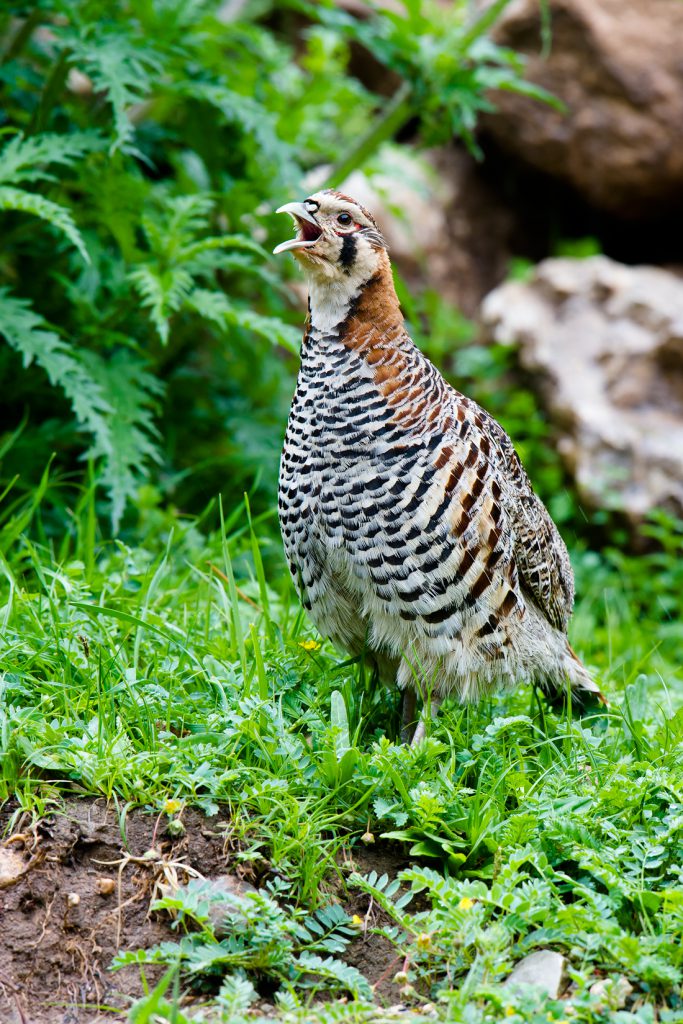
8 White Eared Pheasant in Kanda Gorge (32.314561, 96.624807) and at Baizha Nature Reserve (31.968731, 96.534756)
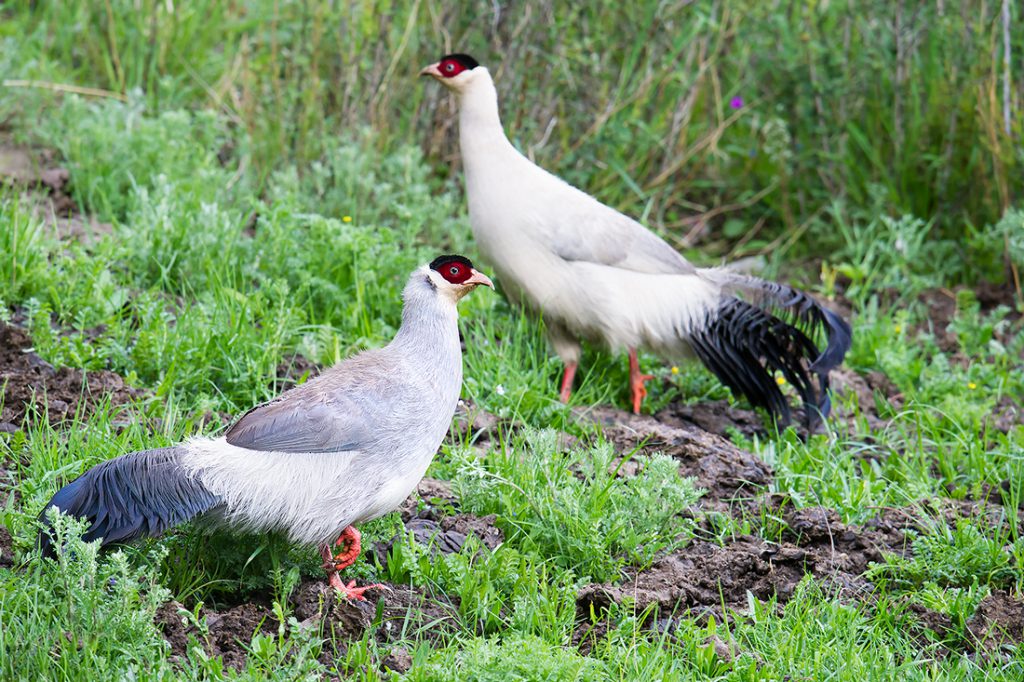
5 Golden Eagle noted at various places
6 Black-necked Crane at Qinghai Lake (36.877808, 100.228673) and in Maduo County
26 Lesser Sand Plover ssp. atrifrons breeding on edges of high-altitude lakes as well as in drier steppe country
5 Ibisbill on tributaries of Mekong River in Nangqian County
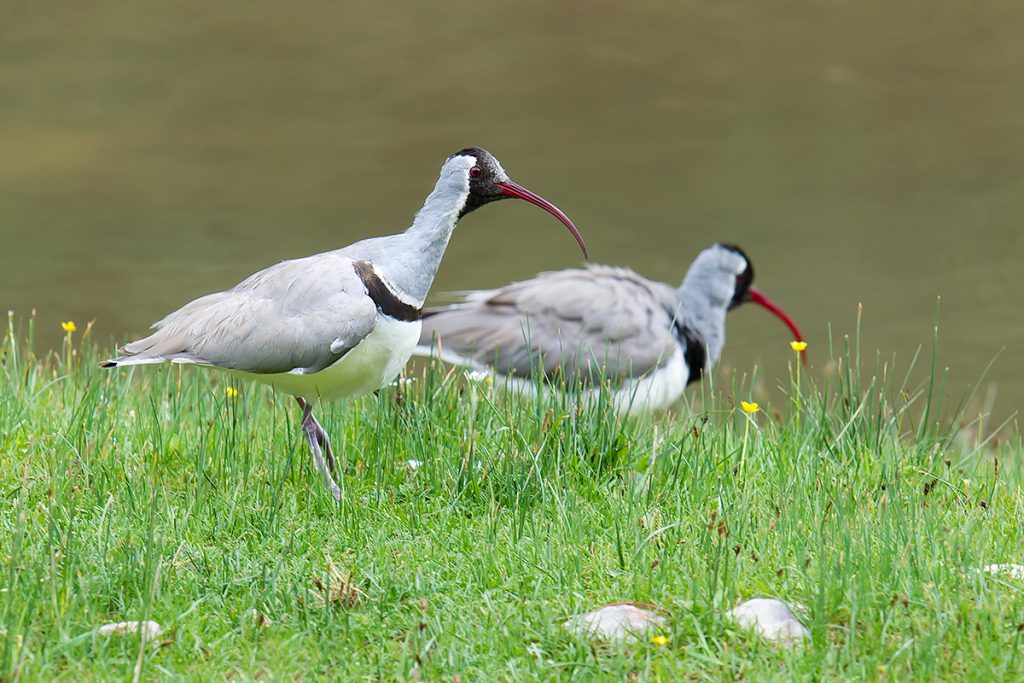
21 Common Cuckoo and 7 Cuculus sp. Common Cuckoo were singing at elevations as high as 4300 m (14,110 ft.)
1 Black Woodpecker at Baizha Nature Reserve. Black Woodpecker is one of several species whose ranges cover northern-temperate Eurasia in a band from Europe to northeast China then spur southwestward to the Tibetan Plateau
1 Tiger Shrike at entrance to Kanda Gorge (32.277059, 96.485171). A highly unusual Qinghai record for this species
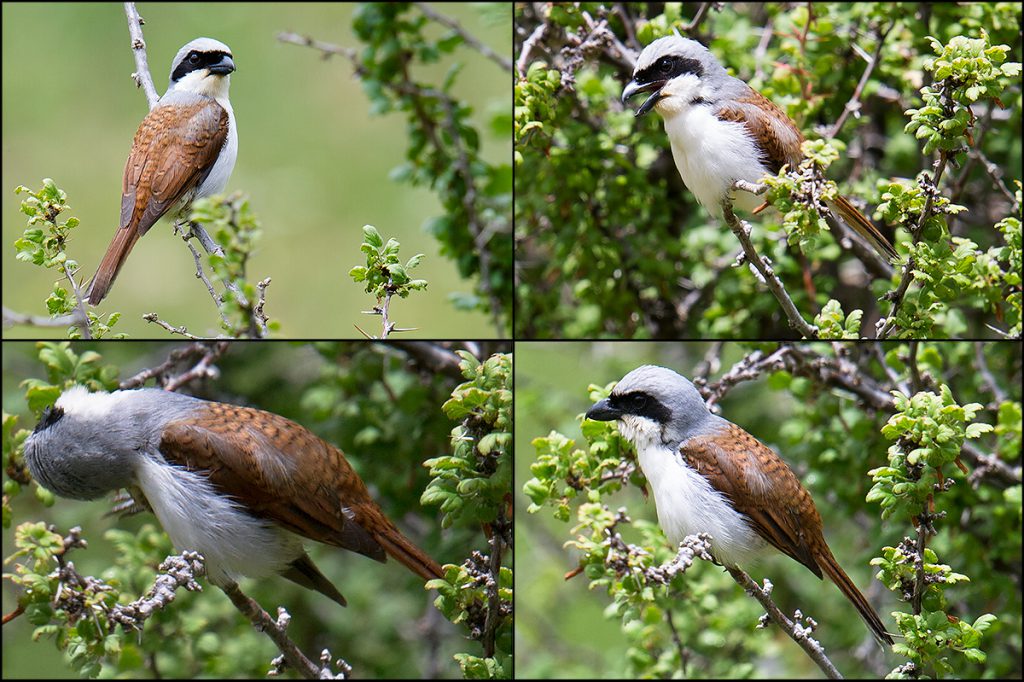
1 Black Drongo, another interesting record for Qinghai
2 Henderson’s Ground Jay in scrub west of Chaka (36.791576, 99.078878)
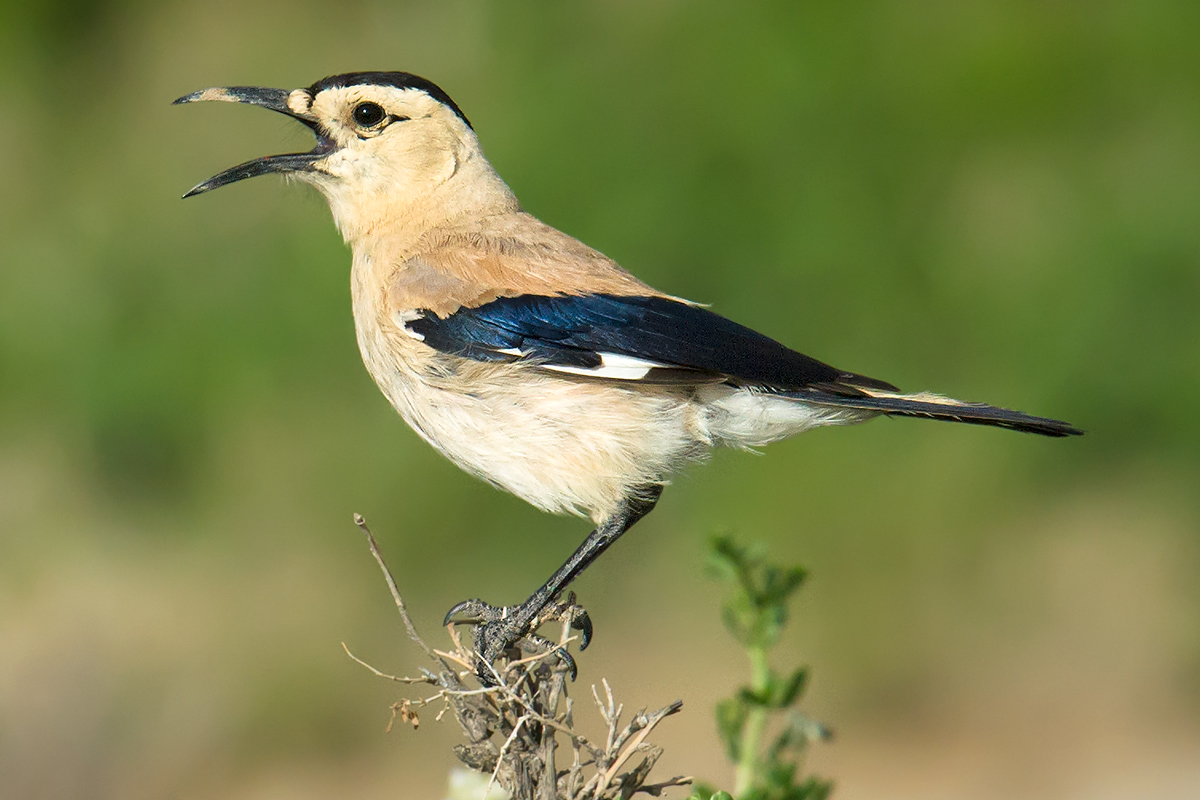
1 southern record of Mongolian Lark south of Gonghe-Qiabuqia
2 White-browed Tit in scrub at KM 2189.5 on G109 (36.778749, 99.653861) near Heimahe (36.729239, 99.779524)
16 Sichuan Tit in Kanda Gorge and at Baizha Nature Reserve
7 White-browed Tit-warbler at my reliable site (36.758683, 99.663055) near Heimahe as well as at Baizha
25 singing Yellow-streaked Warbler in Baizha Nature Reserve as well as in riparian scrub along Mekong River
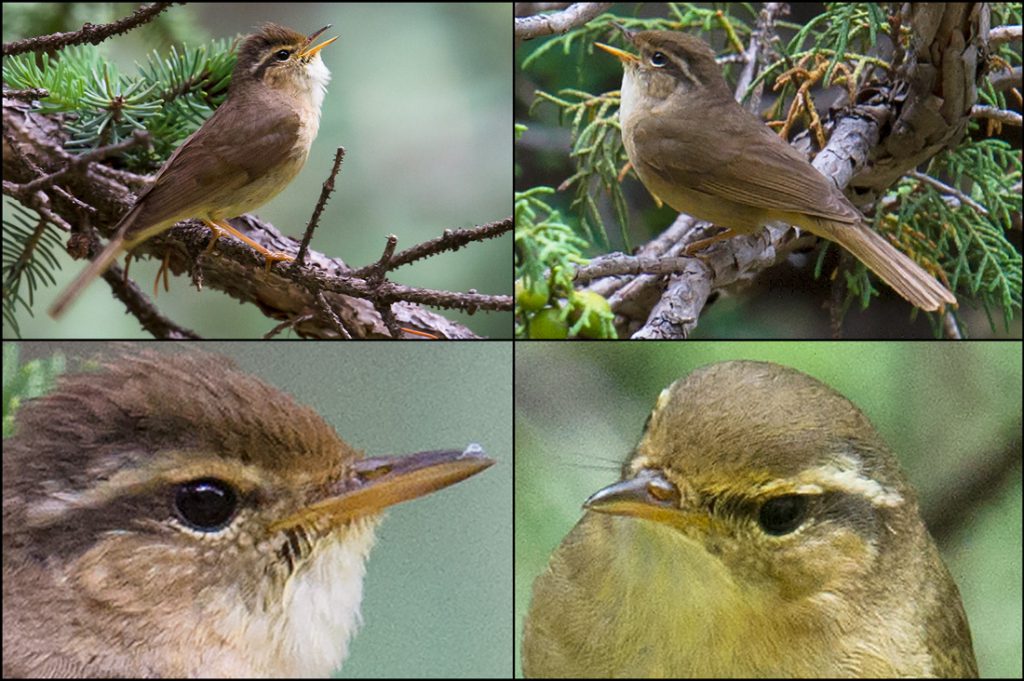
8 Gansu Leaf Warbler in stand of conifers at 36.973133, 102.441300 in Huzhu County
22 Sichuan Leaf Warbler at Baizha Nature Reserve
29 Greenish Warbler at various sites, including high-altitude scrub
7 Tibetan Babax at nunnery in Kanda Gorge as well as at mouth of gorge
1 Dark-sided Flycatcher at Baizha Nature Reserve
2 Siberian Rubythroat in Huzhu County. This mainly Siberian breeder has a disjunct breeding range extending across northern Qinghai, southern Gansu, and northern Sichuan
5 Chinese Rubythroat in scrub (36.758683, 99.663055) near Heimahe as well as at Yankou Shan (33.199406, 97.466606)
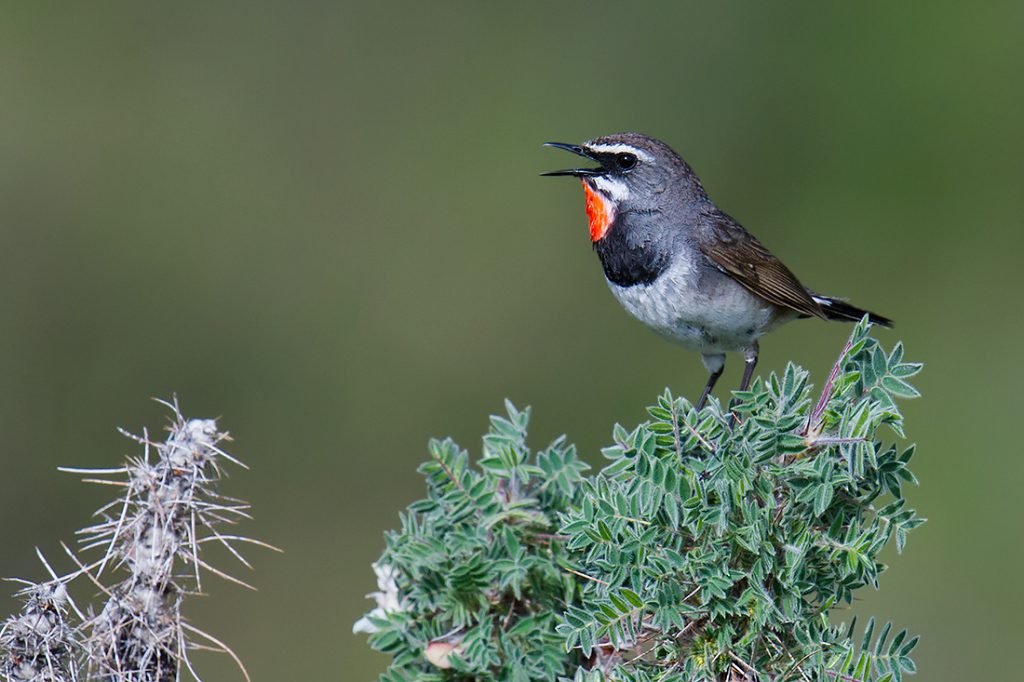
47 Slaty-backed Flycatcher, all at Baizha Nature Reserve
2 Przevalski’s Redstart, colorful China endemic noted at Przevalski’s Site (36.457249, 98.502578), elev. 3820 m (12,530 ft.), in Dulan Mountains west of Chaka
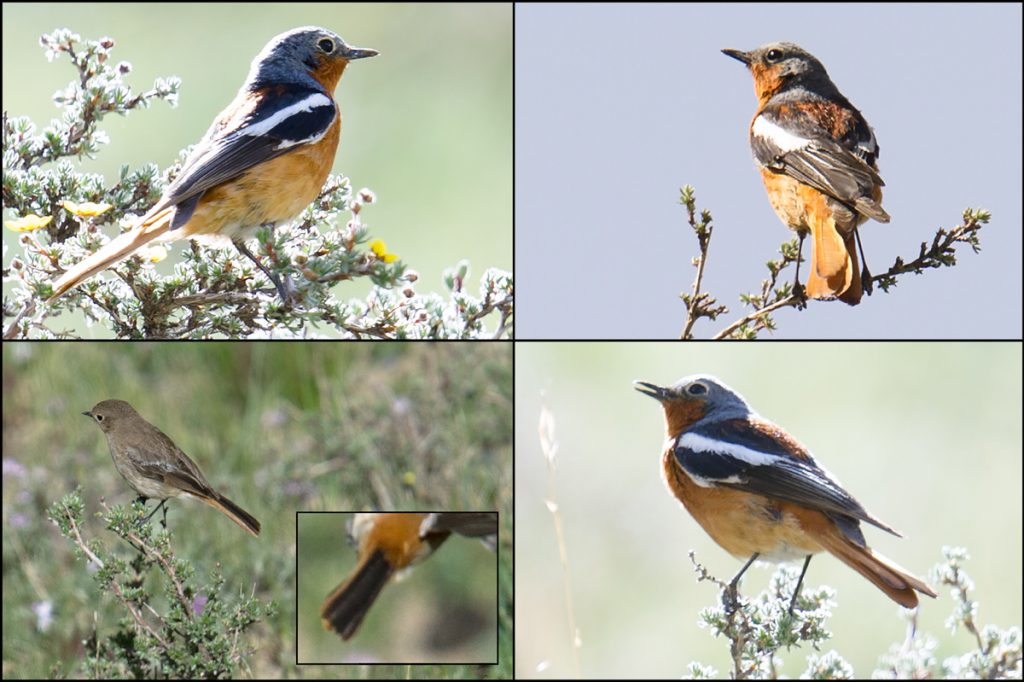
76 Hodgson’s Redstart, always in greener, forested areas such as Huzhu County and Baizha Nature Reserve
11 Plumbeous Water Redstart, all at lower elevations at Baizha
109 Black Redstart, a species well-adapted to high-altitude desert, semi-desert, steppe, and scrub
6 Güldenstädt’s Redstart breeding around Heimahe at elevations as low as 3800 m (12,470 ft.)
7 Chestnut Thrush in forests in Huzhu County
107 Kessler’s Thrush at various sites, usually in high-altitude forest and scrub, sometimes around farms and villages
1 Maroon-backed Accentor at Baizha Nature Reserve
3 Przevalski’s Finch at two sites near Heimahe
3 White-winged Grosbeak near Chaka and in Kanda Gorge
2 Blanford’s Rosefinch at Baizha Nature Reserve
2 Tibetan Rosefinch on barren saddle, elev. 4700 m (15,420 ft.), above Ela Pass (35.497608, 99.511449)
9 Blanford’s Snowfinch in semi-desert and high steppe, sometimes occurring alongside its congener Rufous-necked Snowfinch, which we usually were finding in slightly wetter habitats
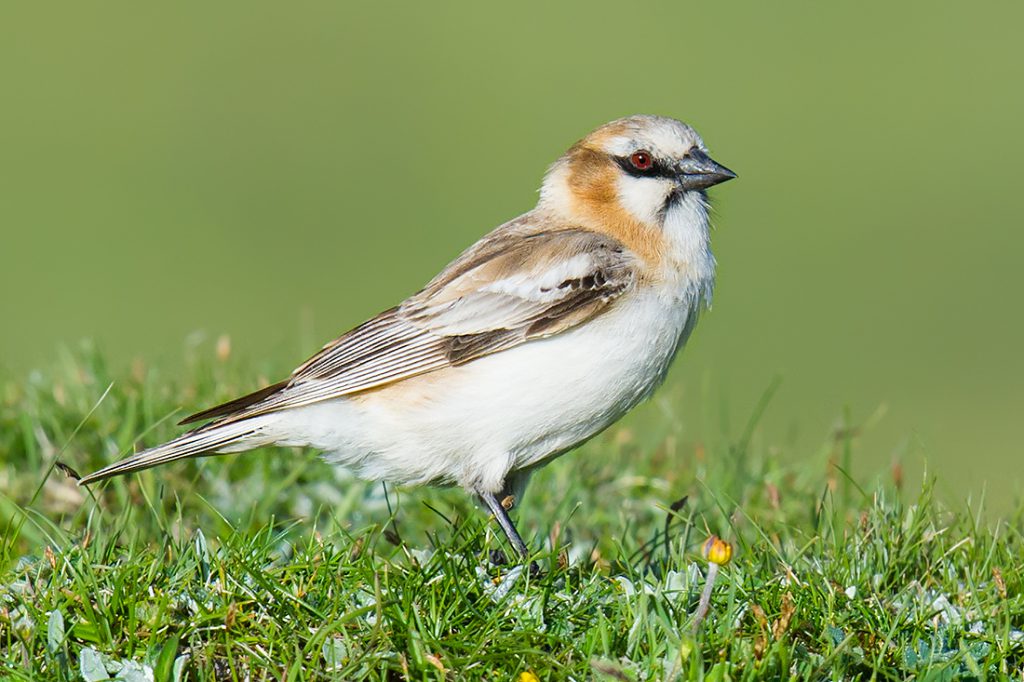
13 Tibetan Snowfinch Montifringilla henrici, mainly around Ela Pass (35.497608, 99.511449)
10 Black-winged Snowfinch Montifringilla adamsi, including nesting pair near Heimahe at G109 KM 2189.5 (36.778749, 99.653861)
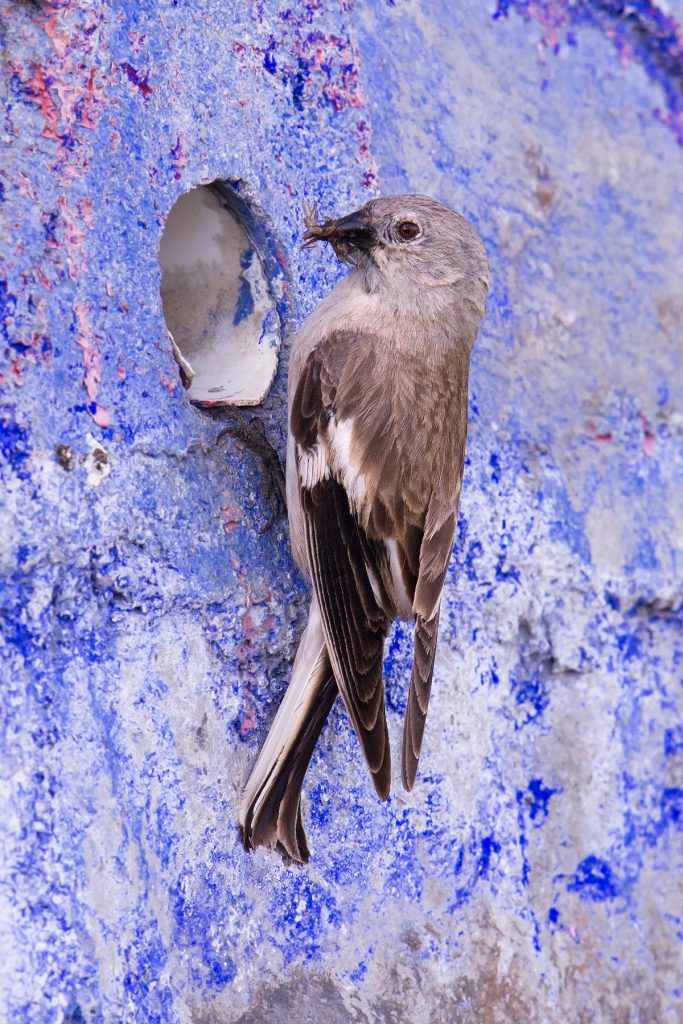
2 Tibetan Bunting at Kanda Pass (32.314561, 96.624807)
11 Pine Bunting at Przevalski’s Site (36.457249, 98.502578), elev. 3820 m (12,530 ft.)
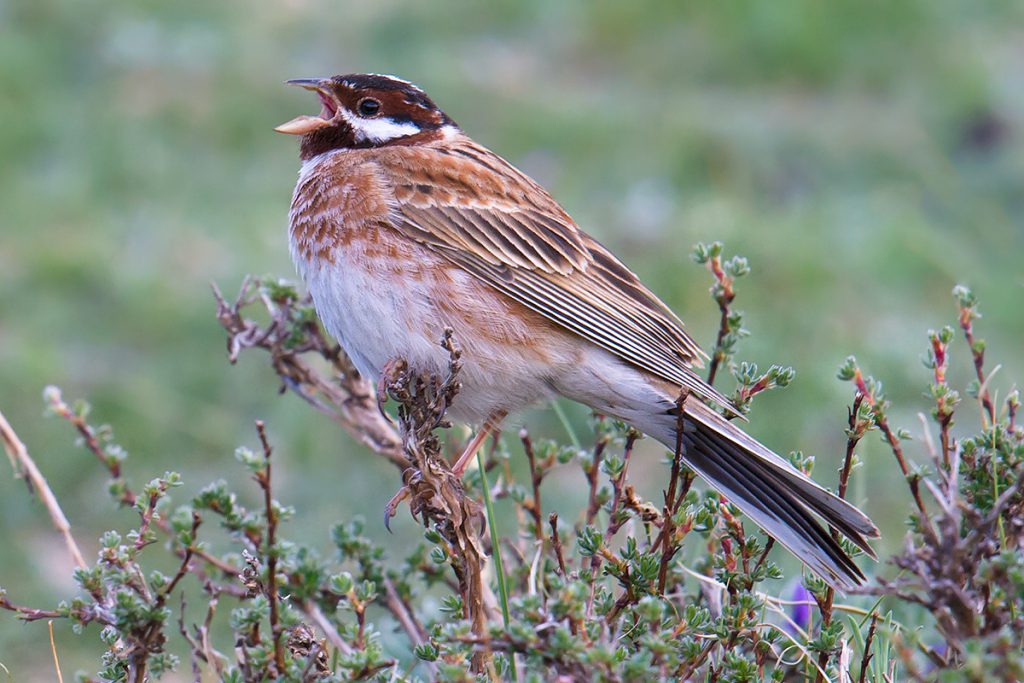
Mammals: Tibetan Wild Ass (steppe, Maduo County), Pallas’s Cat (night view near Maduo [Machali]), Mongolian Five-toed Jerboa (Maduo [Machali]), Plateau Pika, Glover’s Pika (Yushu [Jiegu], Kanda Gorge, Baizha), Himalayan Marmot, Tibetan Antelope (steppe), Tibetan Fox (steppe, Maduo County), Red Fox (steppe near Qinghai Lake), White-lipped Deer (scrub near Heimahe), Tibetan Macaque (fully wild individuals in Baizha Nature Reserve), Blue Sheep (half-tame flocks around Ga’er Monastery [31.829966, 96.487758])
Astronomy: Amazing views of Milky Way, rings of Saturn, and bands of Jupiter as well as Jupiter’s Galilean moons on clear night in steppe near Maduo (Machali), elev. 4200 m (13,780 ft.). Used my Swarovski ATX-95.
MICHAEL’S FIRST BIG TICK: GANSU LEAF WARBLER
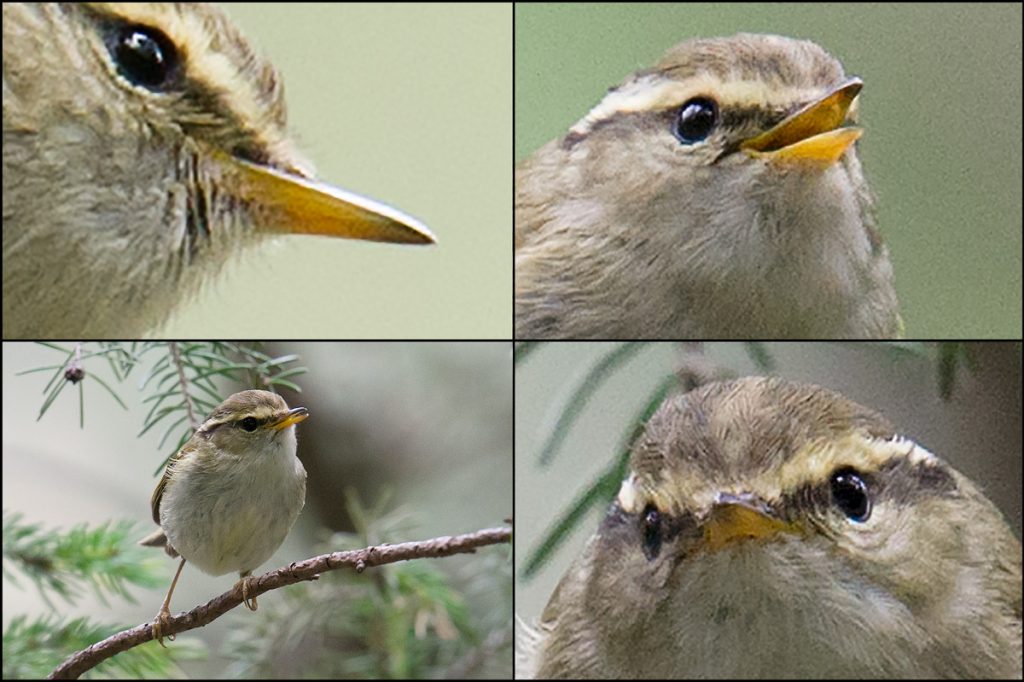
On Sun. 26 June, Michael Grunwell, Mark Waters, Elaine Du, and I flew from Hongqiao Airport in Shanghai to Xining Caojiabao Airport. We rented a Mitsubishi Pajero from Shenzhou and drove 200 km (124 mi.) to Jiading (36.951698, 102.494353) in Haidong Prefecture. We checked in to the very comfortable Huzhu Yingyuan Hotel (Hùzhù Yíngyuàn Bīnguǎn [互助营苑宾馆], +86 (0) 972-8395288, 320 yuan, 36.951935, 102.480026).
The next morning, Mon. 27 June, in the gardens near the hotel we noted singing Siberian Rubythroat. Juvenile Hodgson’s Redstart were numerous, a Chestnut Thrush was collecting worms, and we found Chinese Nuthatch and Elliot’s Laughingthrush.
After breakfast, driving along the Datong River, we quickly found Michael’s target species, Gansu Leaf Warbler. It was making its easily recognizable trill from the crown of trees near the busy S302. The warbler did not show. Thinking we would find plenty of Gansu Leaf Warbler elsewhere, we drove to Zhalong Gou Scenic Area. There we noted Large-billed Leaf Warbler and Greenish Warbler but no more Gansu Leaf Warbler.
We doubled back to the hotel and checked out. We drove northwest on the S302. We enjoyed extended views of Gansu Leaf Warbler in a stand of conifers at 36.973133, 102.441300. At the pass and at the areas below the pass we found Blue-fronted Redstart and heard Chinese White-browed Rosefinch.
A BAGFUL OF LIFE BIRDS AT QINGHAI LAKE
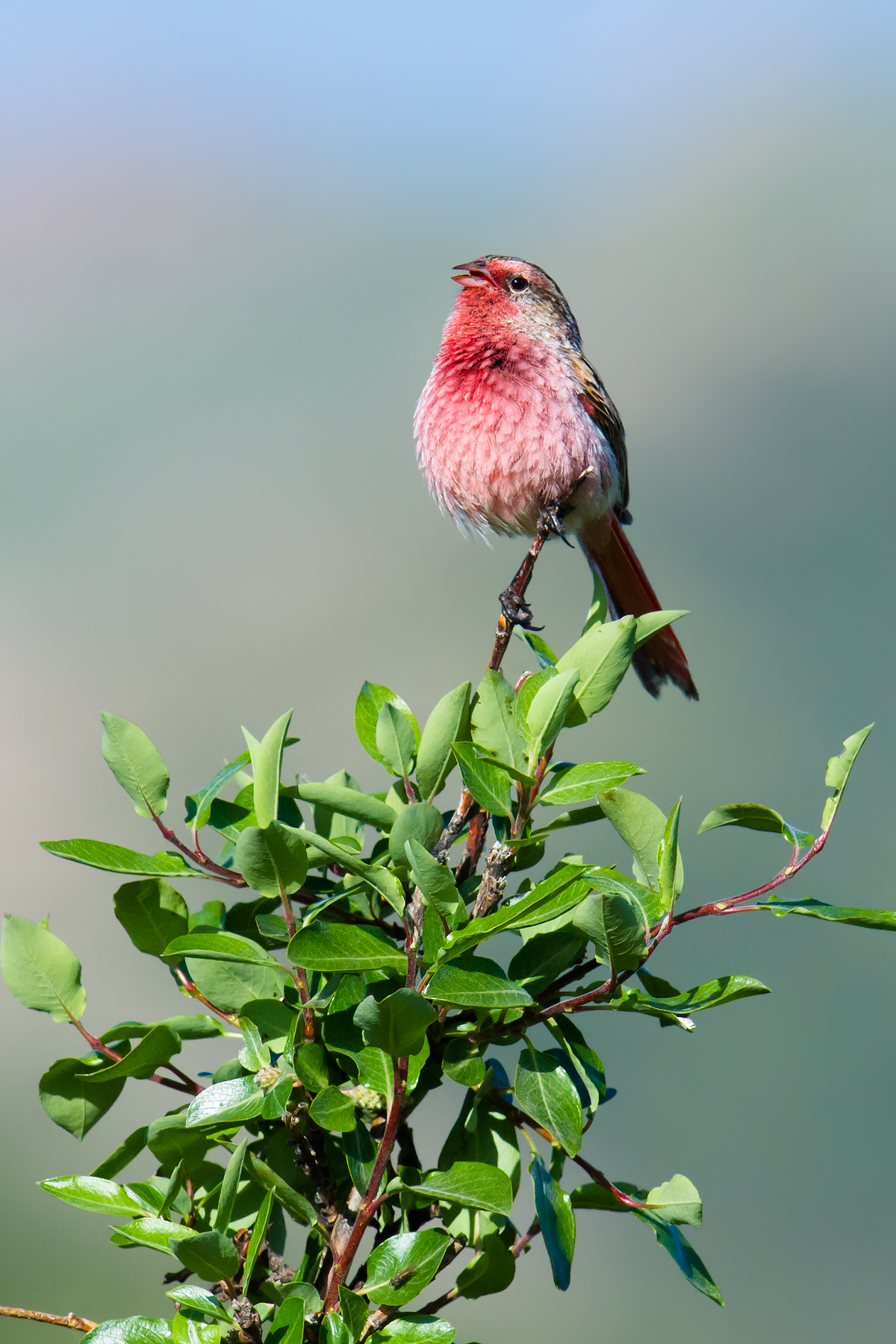
We next drove 330 km (205 mi.) to Heimahe, a tourist center on the southwestern corner of Qinghai Lake. We checked in to Heimahe Business Hotel (Hēimǎhé Shāngwù Bīnguǎn [黑马河商务宾馆], +86 (0) 974-8519377, 36.722987, 99.784353).
Tues. 28 June was a banner day that saw Michael tick 13 lifers. We awoke at dawn to the sound of Black Redstart singing from the top of a nearby building. Alpine Chough flew over the heads of the crowd of tourists watching the sun rise. We drove west of Heimahe on the G109. Along the way we found Ground Tit and Rock Sparrow nesting in cavities on the wall of a ditch. We stopped at KM 2189.5 (36.778749, 99.653861) on the G109. Among the highlights there were Przevalski’s Finch, White-browed Tit, Tibetan Snowfinch raising young, and three species of accentor: Robin Accentor, Brown Accentor, and Rufous-breasted Accentor.
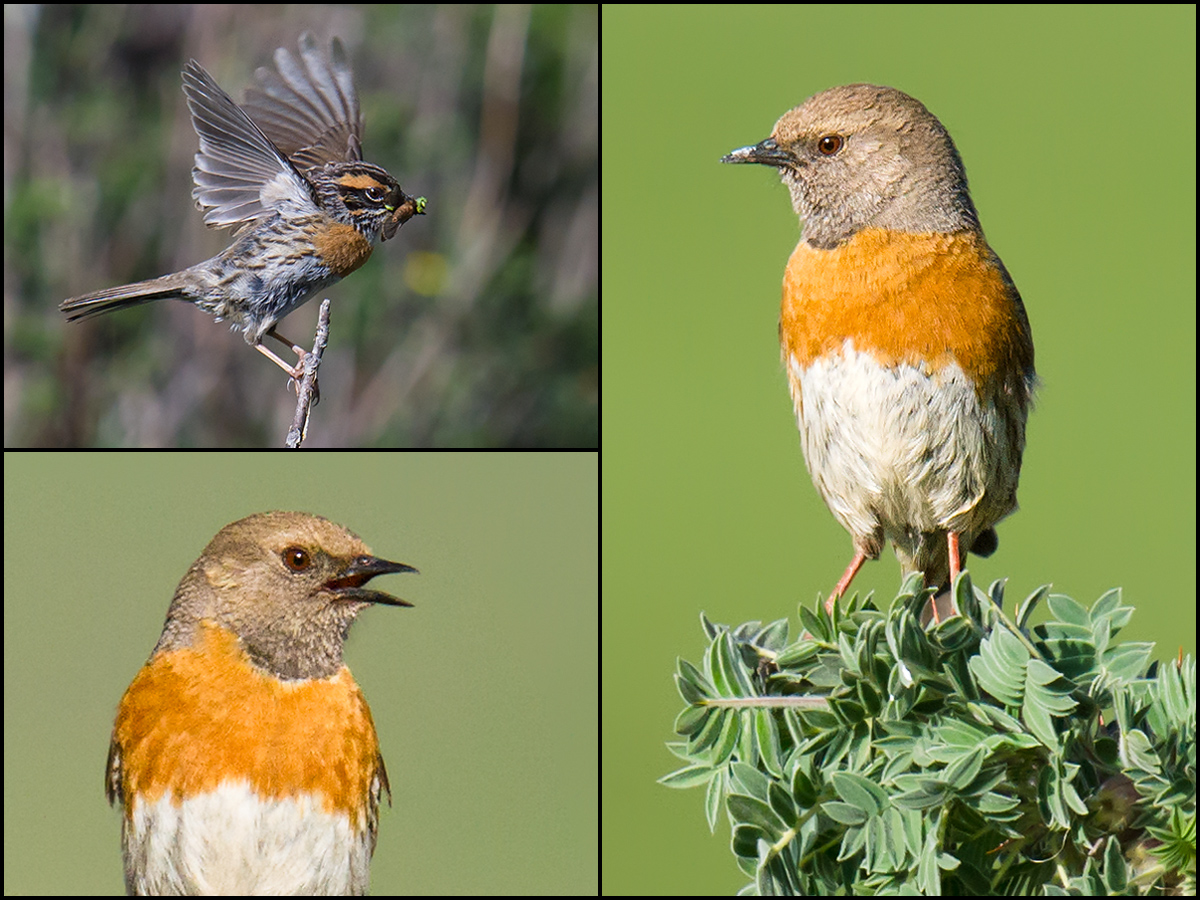
Kessler’s Thrush was singing at the top of the scrub-covered mountain (36.778217, 99.660255). I walked to that point, noting Twite and breeding Siberian Stonechat. Alpine Leaf Warbler were carrying cropfuls of grubs for their young, and Himalayan Vulture made a low flyover. We noted trip-first Upland Buzzard.
The long climb up the scrub-covered hill by KM 2189.5 tired everyone out. We drove back to Heimahe and rested.
In the late afternoon we birded the shore of the great inland sea. We took the G109 to 36.700053, 99.870267 and turned down a dirt track, noting our trip-first Isabelline Wheatear. We stopped and examined the lake at 36.727617, 99.883880. We had 5 Common Goldeneye, the only record of that species for the trip.
We drove along the S206 and were stunned by the thousands of yurts set up to attract tourists. The explosion of tourism along the lake has crowded out many wetland birds. After a long search we finally found a non-breeding pair of Black-necked Crane and Tibetan Lark. (To reach the mini-wetland where we found the crane and lark, leave the S206 for a dirt road at 36.750067, 99.772678. The wetland is at 36.756179, 99.785853.)
TIT-WARBLER MOUNTAIN
On Wed. 29 June our team returned to a spot I had discovered on my first trip to Qinghai in 2013. I call the spot Tit-warbler Mountain. We drove to KM 2187 on the G109 and turned left onto a dirt road at 36.782112, 99.675814. We drove to the end of this dirt road (36.766994, 99.667711). We started walking toward the scrub-covered hill and topped out at the peak at 3620 masl (11,880 ft.) (36.758683, 99.663055). Along the way we found a party of White-browed Tit-Warbler, a splendid male Chinese Rubythroat, and Przevalski’s Finch. I am now 2 for 2 at that site for White-browed Tit-warbler.
The rubythroat and tit-warblers were lifers for everyone but me. We also had Robin Accentor and Alpine Leaf Warbler. We failed to note Smoky Warbler and White-browed Tit, species I had noted on that hill in 2013. We found 10 White-lipped Deer, a species we have seen regularly at KM 2189.5 (36.778749, 99.653861) as well as on Tit-warbler Mountain.
Michael was particularly happy, and everyone was amazed at the panorama of mountain, scrub, and pasture. High clouds softened the intense sun. We could see our Pajero in the valley far below, and in the hazy distance Qinghai Lake was blue, like a sea.
As we were watching the rubythroat, a pair of young Tibetan men arrived. They had seen us in the valley and followed us. One of the pair hardly spoke Mandarin, but the other was fluent, having attended university in Nanchang, capital of Jiangxi. As Michael spent two years in Nanchang, we immediately had something to talk about. The young man said he would like to go abroad but cannot, because the Chinese government will not issue passports to young Tibetans. The Qinghai that for me is a paradise of birds and clean air is for this young man a place of restrictions and dilemmas. To be fair, though, one must note that just a few decades ago a university education for a Tibetan would have been unthinkable.
Driving back to Heimahe, we found Common Tern in a pond on the outskirts of town.
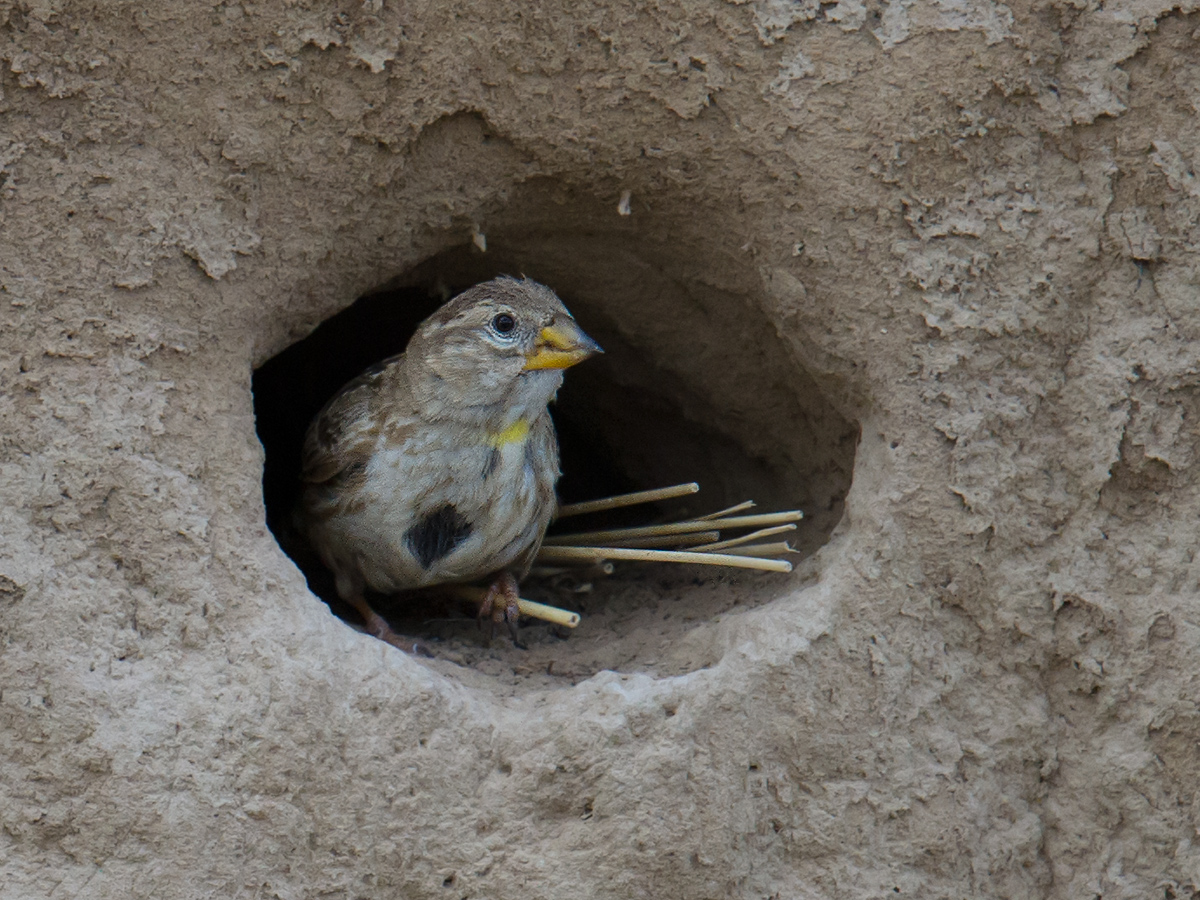
In the afternoon we drove 22 km (14 mi.) to Rubber Mountain Pass (36.754213, 99.606705), elev. 3817 m (12,520 ft.). Just below the pass we found Güldenstädt’s Redstart, a lifer for everyone in our party but me. We crossed the pass and on the Chaka side soon noted the transition from an alpine to semi-desert environment. The birds were different: Common Rock Thrush, Common Swift, Blanford’s Snowfinch, Desert Wheatear.
Near Dashui Qiao (36.691347, 99.457542), elev. 3370 m (11,060 ft.), we found a dirt track and pulled onto it. We followed it to Dashui Reservoir (36.716292, 99.471655). The Desert Wheatear, a pair, had chosen a prime spot for their nest, which we discovered in the tall bank of the creek. The mouth of this creek contained a Lesser Sand Plover. For neighbors the wheatear family had nesting Rock Sparrow.
CHAKA
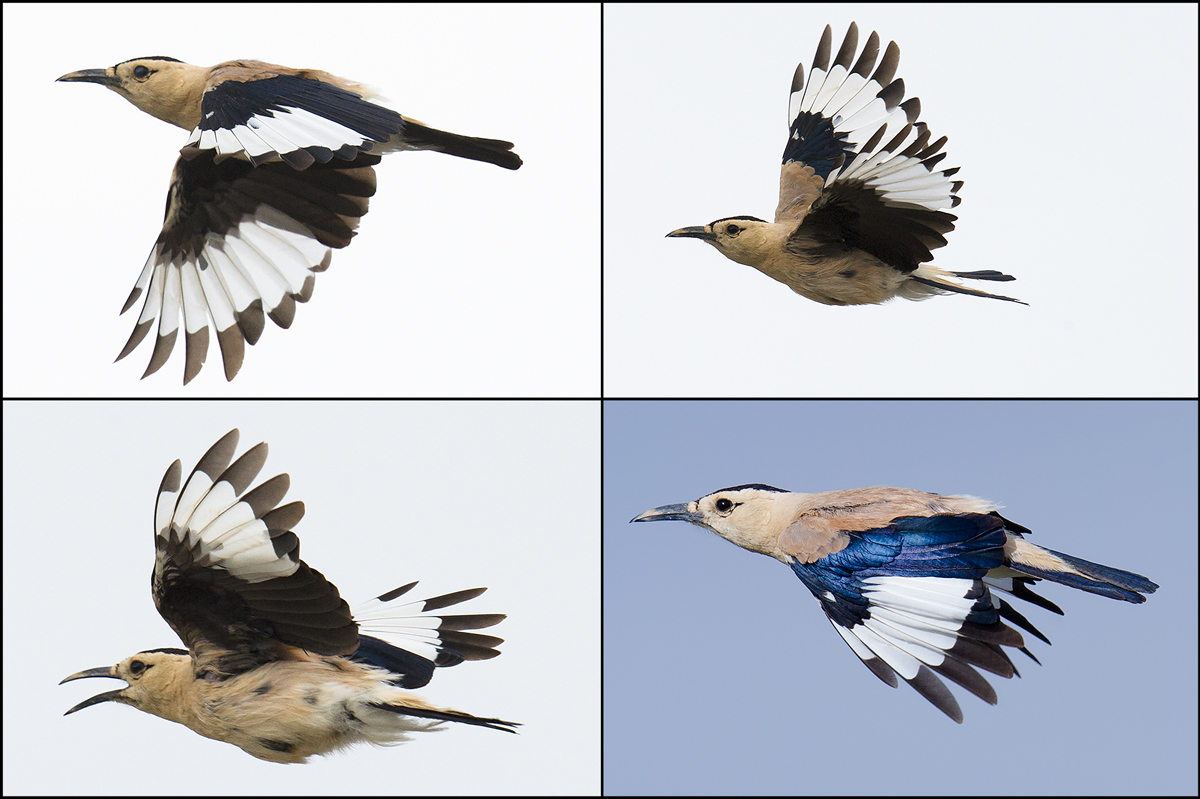
On Thurs. 30 June we drove 80 km (50 mi.) from Heimahe to Chaka. We drove west of Chaka on the G109 and found the area well-known for Henderson’s Ground Jay. One good spot is just past KM 2266 if one is heading west from Chaka. The coordinates are 36.777162, 98.960870. We did not find Henderson’s Ground Jay here, but the habitat is ideal, and very importantly one can drive into the chaparral at this point. The other point, 36.772307, 98.945571, is just before KM 2268 heading west from Chaka. Here we found 2 Henderson’s Ground Jay. One cannot drive off the dangerous G109 at this point. We parked as far off the road as possible. There is no shoulder, and the road is elevated. Cars zoom by.
We found the ground jays in the late afternoon, after rainstorms had cleared the already very clean air. The air was cool and refreshing, the views superb. The Chaka area is the very definition of a basin. Mountains, the higher ones lightly dusted with newly fallen snow, surround the ground-jay spot. The vegetation is old; the woody bushes occupy little clumps of earth created by the holding action of the roots over the decades. The ground jays perch atop the bushes.
PRZEVALSKI’S SITE
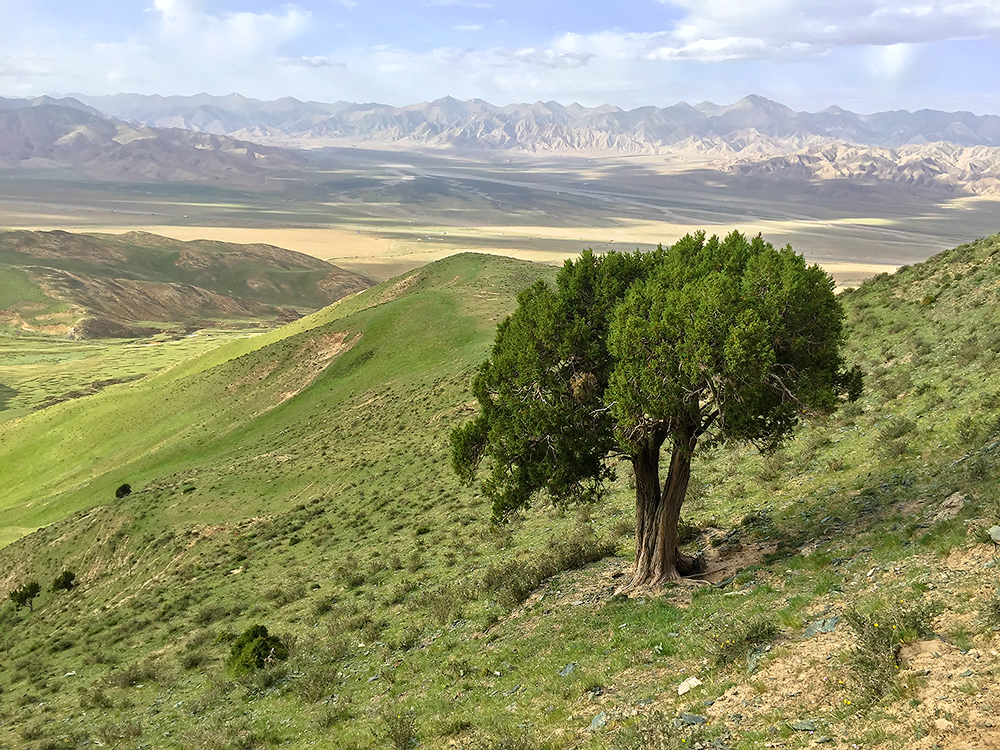
Fri. 1 July saw us note Przevalski’s Redstart and Pine Bunting. We drove 82.7 km (51.4 mi.) west from Chaka to the turnoff at KM 2335.5 on the G109. We negotiated the dirt road carefully in our high-clearance Pajero. We parked at the entrance to the valley. Nothing had changed since my last visit in 2013. Chinese Juniper Juniperus chinensis stud the slopes, some of the trees centuries old.
Przevalski’s Partridge did not appear, so I climbed to the ridge, elev. 3990 m (13,090 ft.). Michael, Mark, and Elaine stood ready below, around the spotting scope. I saw a nesting pair of White-throated Redstart at 3960 m (12,990 ft.). I reached the ridge and walked into the next valley. I heard a single Przevalski’s Partridge calling, but Michael and Mark weren’t going to climb 400 m (1,310 ft.) from the valley floor to get to this valley. I returned to the ridge and walked back down. En route I noted Blue-fronted Redstart and Alpine Leaf Warbler. White-lipped Deer were in the scrub.
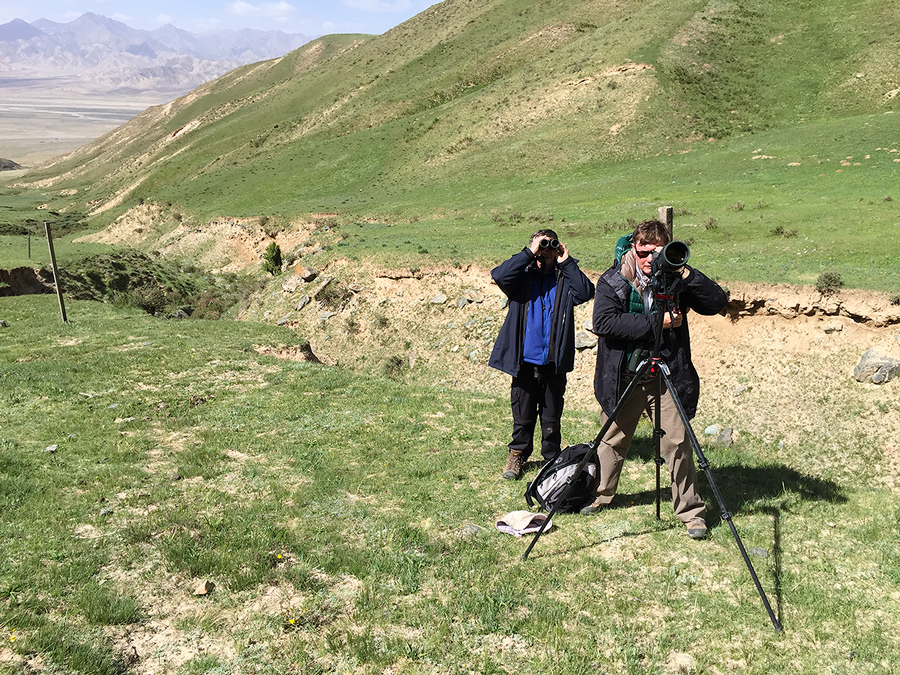
Michael walked up the valley to meet me. At 36.462925, 98.50332 he found Przevalski’s Redstart. He radioed me with the news, and I scrambled down the valley toward him. A male and female were together. Michael, Mark, and Elaine had a life bird.
ELA PASS AND MADUO

On Sat. 2 July, the team explored Ela Pass (Èlā Shānkǒu [鄂拉山口]), 35.497611, 99.511444, elev. 4700 m (15,420 ft.). We were looking for three “Tibetans” and found one: Tibetan Rosefinch. A flat tire ate into our time today and precluded a trip to the top.
An interesting record today was Mongolian Lark found at KM 197 on G214 south of Gonghe (共和). The elevation at that spot is 3110 m (10,200 ft.). This region of Qinghai must be the far southern extension of the range of Mongolian Lark. Just south of KM 197, the land tilts upward, the average elevation is higher by about 1000 m (3,280 ft.), and the vegetation changes from high-arid to alpine.
WHERE CHINA BEGINS
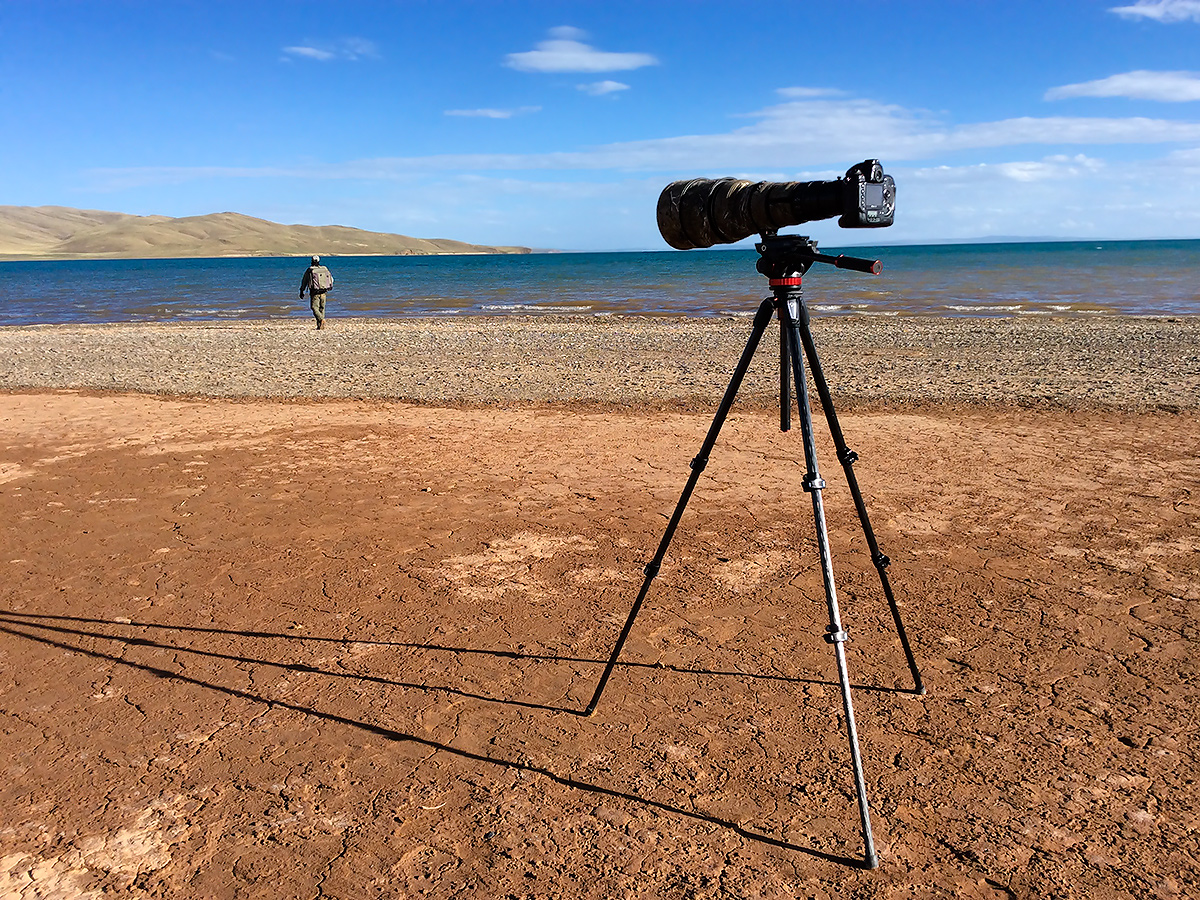
On Sun. 3 July our team drove west of Maduo-Machali to Eling Lake (34.902685, 97.709949), one of the sources of the Yellow River, which is the source of Chinese civilization. At the place where China begins, we found 225 Common Merganser, 250 Bar-headed Goose, 2 Red-crested Pochard, 1 Common Pochard, and 27 Himalayan Vulture devouring the carcass of a sheep. On the high-altitude steppe between Maduo-Machali and the lake we found 2 Black-necked Crane, 27 Tibetan Wild Ass, 25 Tibetan Gazelle, and a Tibetan Fox.
Here near its source China’s Mother River runs clear and cold, a mountain stream. The steppe is remarkably flat and vast. Sunset was a marvel.
After the sun set, we chose a spot on the range and set up my spotting scope. We saw the bands on Jupiter as well as the moons of that giant planet, and we saw the rings of Saturn. The Milky Way was so bright, it looked like haze.
Driving back to Maduo-Machali, our headlights caught the eye shine of a plump little Pallas’s Cat. Crossing the road were 2 long-eared, whip-tailed Mongolian Five-toed Jerboa.
TWO MIGHTY RIVERS
On 4 July, our team crossed the Yellow River and the Yangtze River in the same day. We drove from the Yellow River town of Maduo-Machali to Yushu-Jiegu, the major Tibetan cultural center just south of the Tongtian River, i.e., the upper Yangtze.
En route we noted Black Drongo at an elevation of 4230 m (13,880 ft.), an unusual record. We found high-altitude specialist Streaked Rosefinch and breeding Greenish Warbler at 4460 m (14,630 ft.). We drove over Bayankala Pass (34.114476, 97.661992), elev. 4824 m (15,827 ft.), higher than Mont Blanc, and explored an extensive stretch of untouched scrub at Yankou Shan (33.199406, 97.466606).
From Yankou Shan, elev. 4460 m (14,630 ft.), we practically coasted down to Yushu-Jiegu, (33.002242, 96.978488), elev. 3700 m (12,140 ft.). Along the way we found 2 Ibisbill fleeing the flooded stream. Mammal of the day was Glover’s Pika, found at elev. 3700 m (12,140 ft.), north of the Tongtian.
GET THEE TO THE NUNNERY (IN KANDA GORGE)!
Tues. 5 July: In China, Buddhist sites are famous for doubling as nature reserves. Take for example the nunnery (32.291641, 96.512173) in Kanda Gorge, north of Nangqian in Qinghai. Nestled deep in the canyon, the steep limestone walls holding the world out, the nunnery is a refuge for Tibetan Partridge and Tibetan Babax, species endemic to the Tibetan Plateau. Today I had the pleasure of watching Michael Grunwell, his old friend Mark Waters, and my wife Elaine add them to their life list.
Kanda holds another major Tibetan: Tibetan Bunting, found today by us at Kanda Pass (32.314561, 96.624807), elev. 4650 m (15,260 ft.).
Far below, we found a pair of White Eared Pheasant feeding with Woolly Hare. We had another White Eared Pheasant at the entrance (32.277059, 96.485171) to Kanda Gorge, the Mekong River coursing below. Also near the mouth of the gorge, we had our surprise record of the day: Tiger Shrike.
We counted 72 Common Rosefinch, most of them in large flocks assembling toward sunset. We found it strange that the rosefinches would be forming large flocks during breeding season.
7 JULY
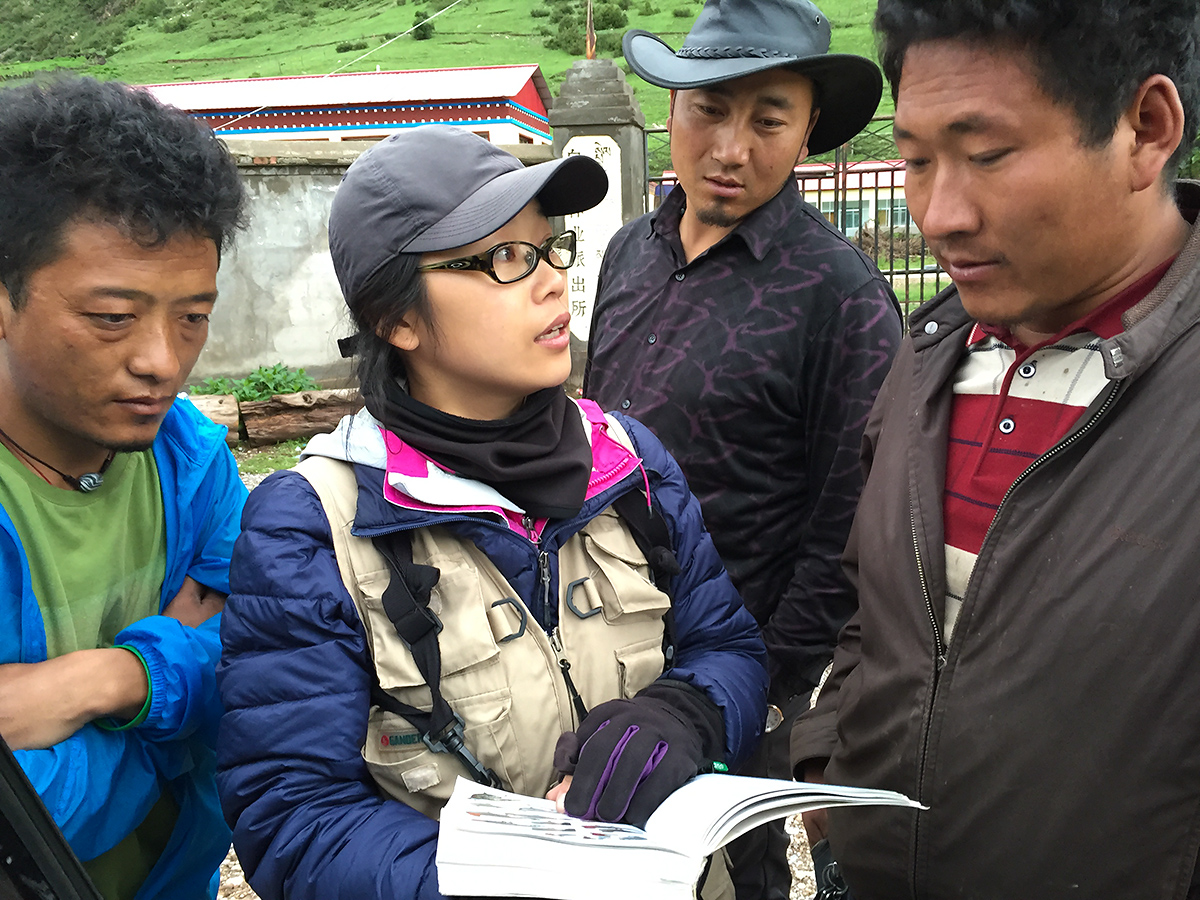
We’re in Nangqian, Qinghai. Today Elaine talked Blood Pheasant with Tibetans. We are trying to find Blood Pheasant in Baizha Forest and thought these gentlemen may know where to go. Craig admired a fine painting of male Hodgson’s Redstart outside our hotel room in Nangqian. What a nice touch, honoring your local birds in your hotel.
8 JULY: INCREDIBLE, BEAUTIFUL BAIZHA FOREST & GA’ER TEMPLE
Michael Grunwell used my scope to scan the slopes around Ga’er Temple (31.829966, 96.487758), Nangqian County, Yushu Prefecture, Qinghai. In the background you could see one of the main buildings of the temple clinging to the mountain at the lofty elevation of 4200 m (13,780 ft.). While we scanned, friendly Tibetan monks and pilgrims passed by, Bearded Vulture passed overhead, no less than six species of crow were making a living, Kessler’s Thrush and Rufous-breasted Accentor added beauty, and half-tame Blue Sheep were clinging to the cliff faces.
POST TO SHANGHAI BIRDING WECHAT GROUP
Tues. 12 July 12:34 pm
QINGHAI UPDATE: Hello Shanghai Birders from beautiful Yushu, Qinghai! This past weekend, the second week of Elaine’s and my Qinghai expedition ended with Blanford’s Rosefinch, Black Woodpecker, and White Eared Pheasant at Baizha Forest on Fri. 8 July and on Sat. 9 July Tibetan Babax at mouth of Kanda Gorge and Ibisbill in stream along G214.
PHOTOS
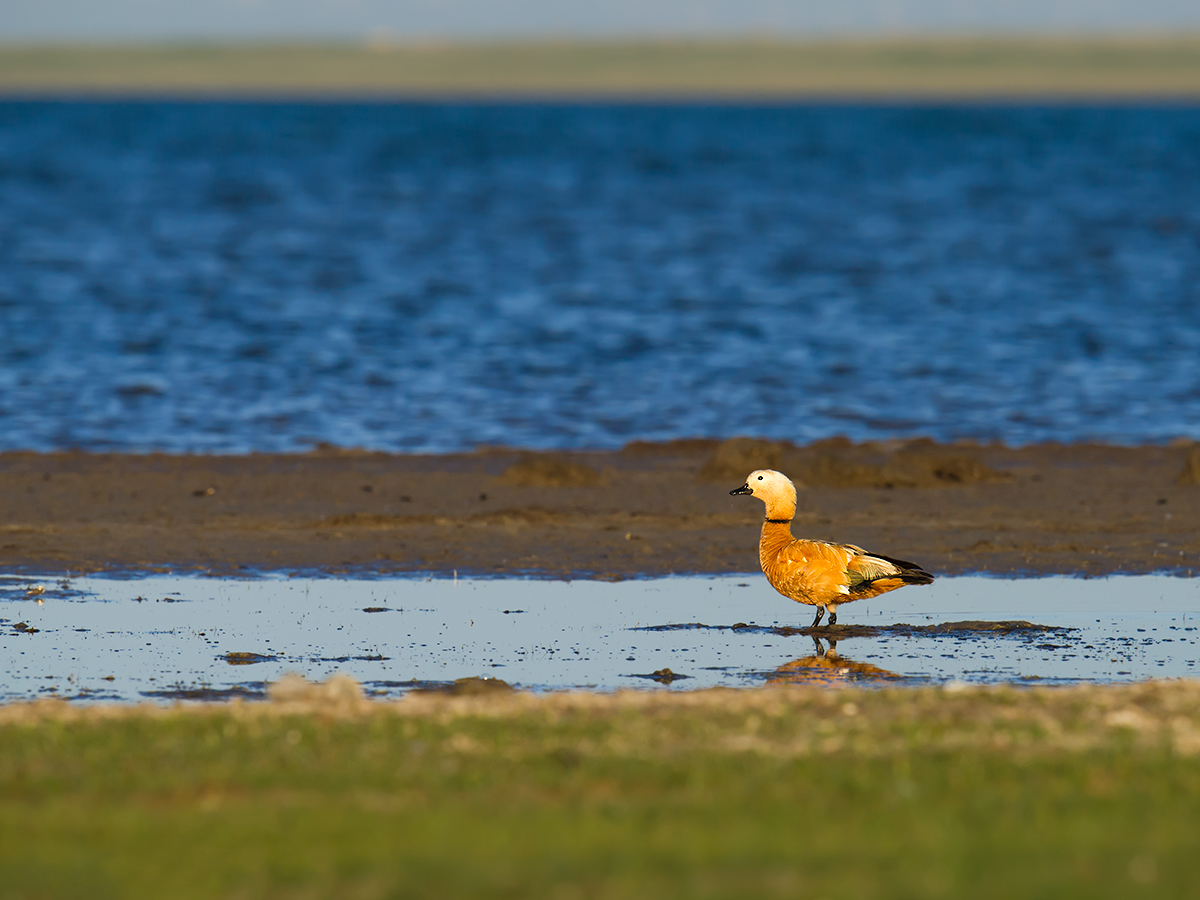
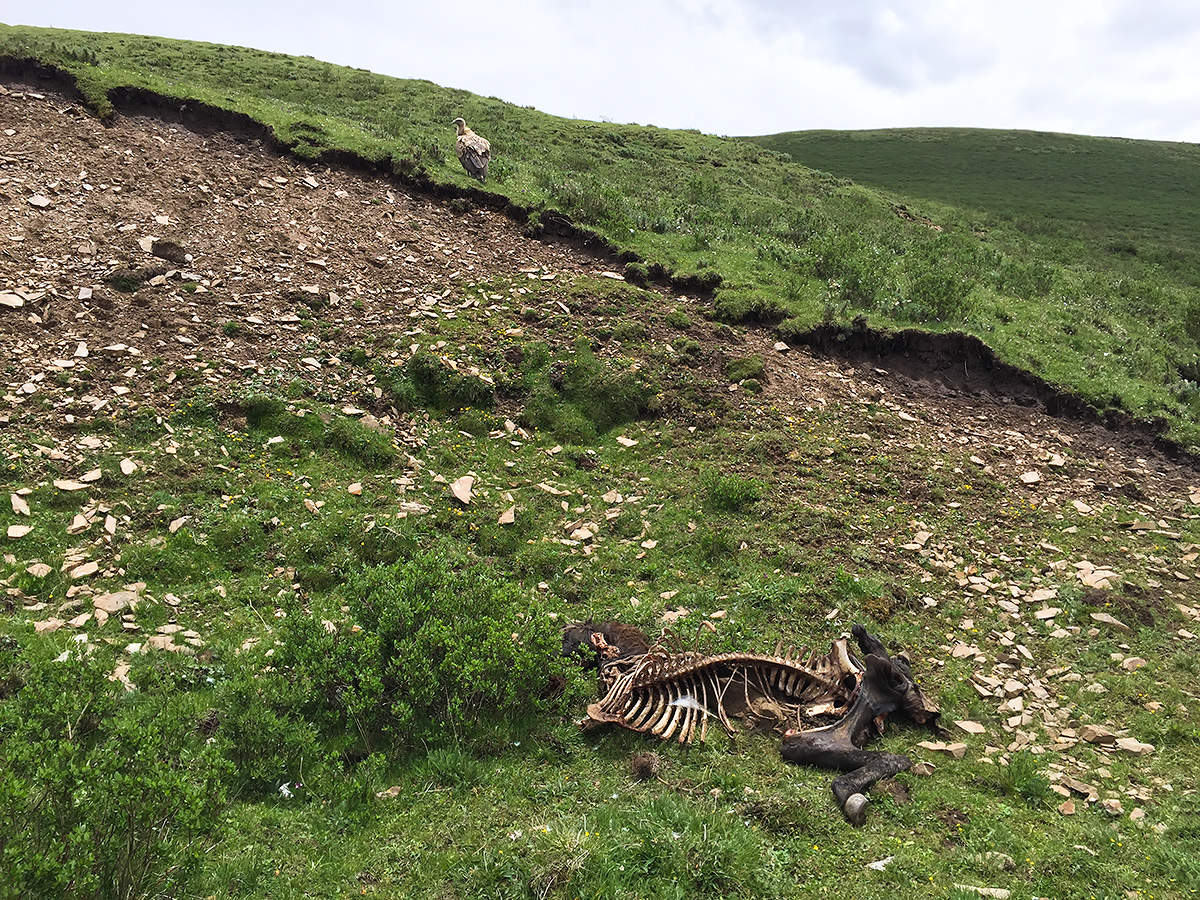
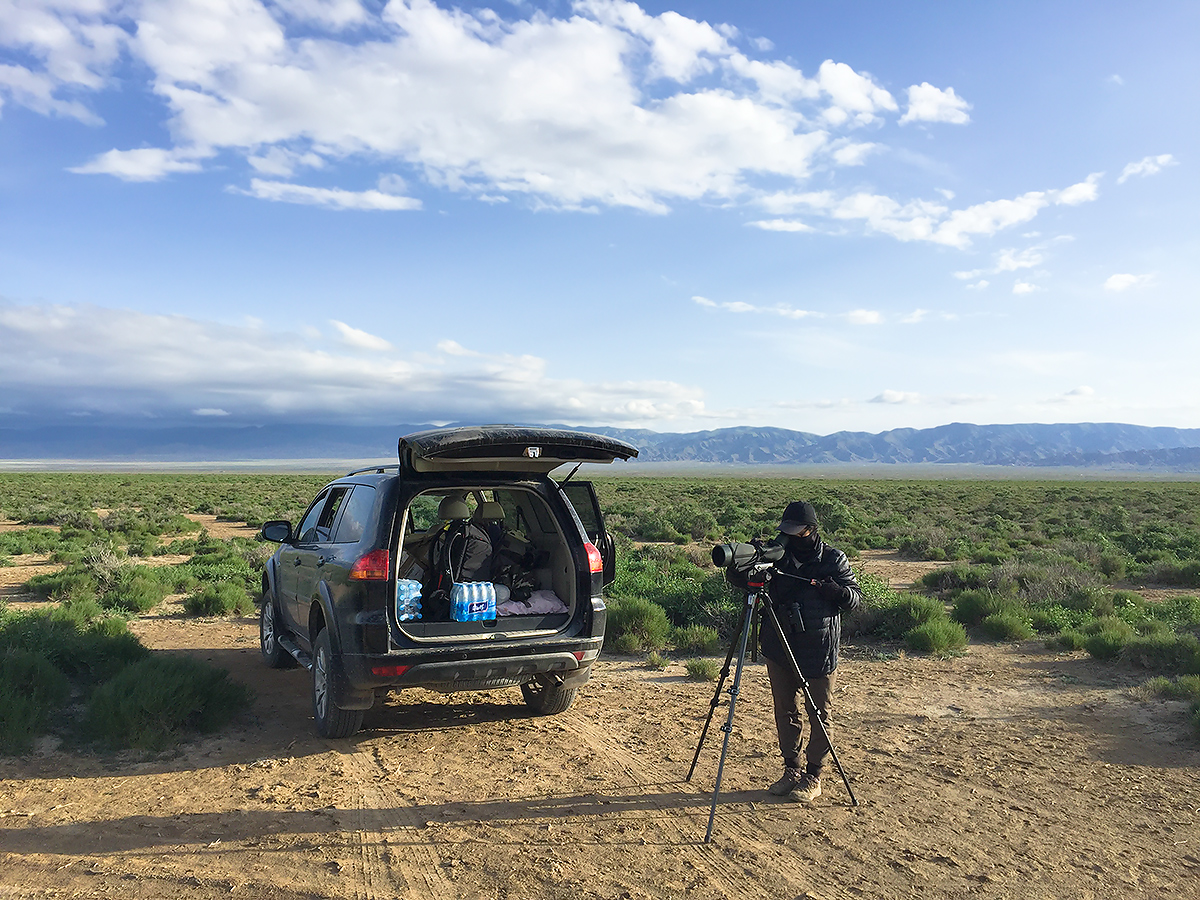

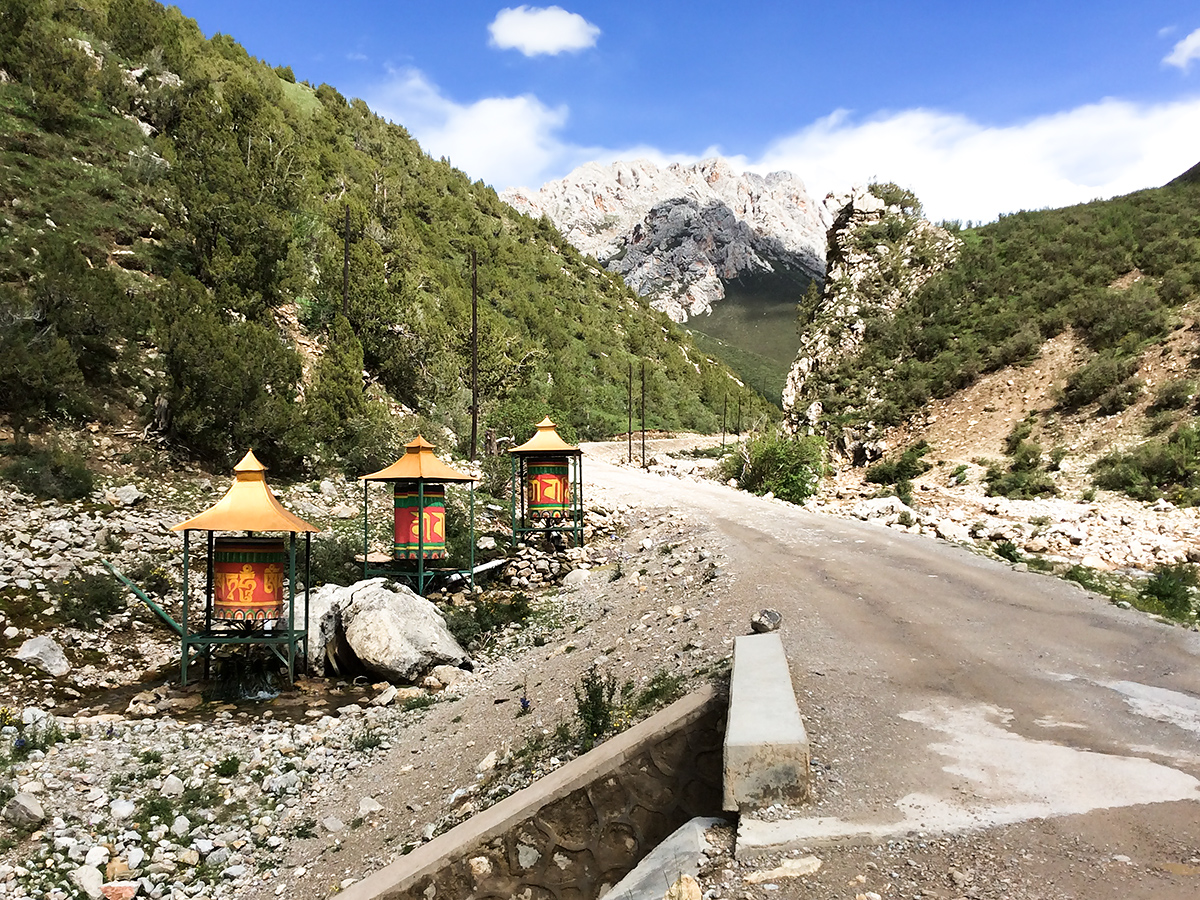
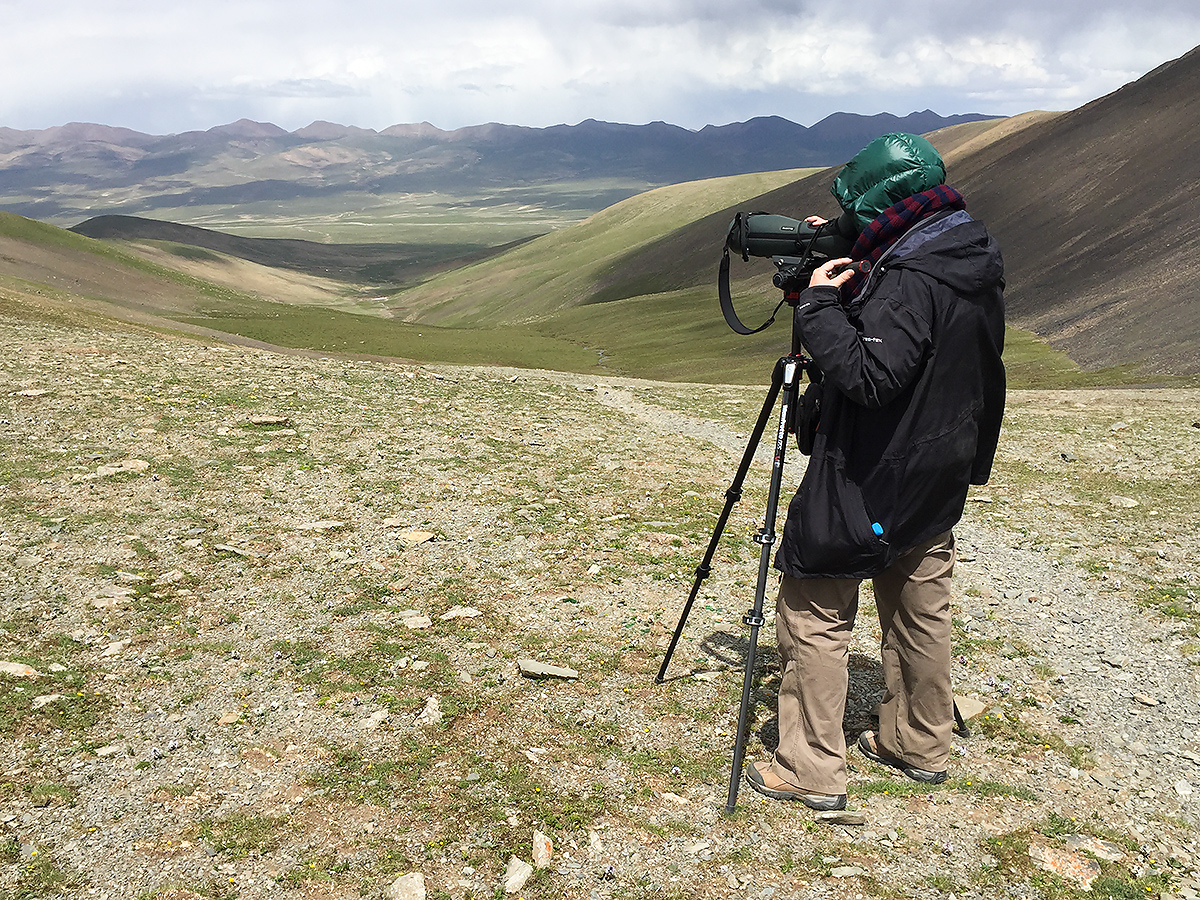
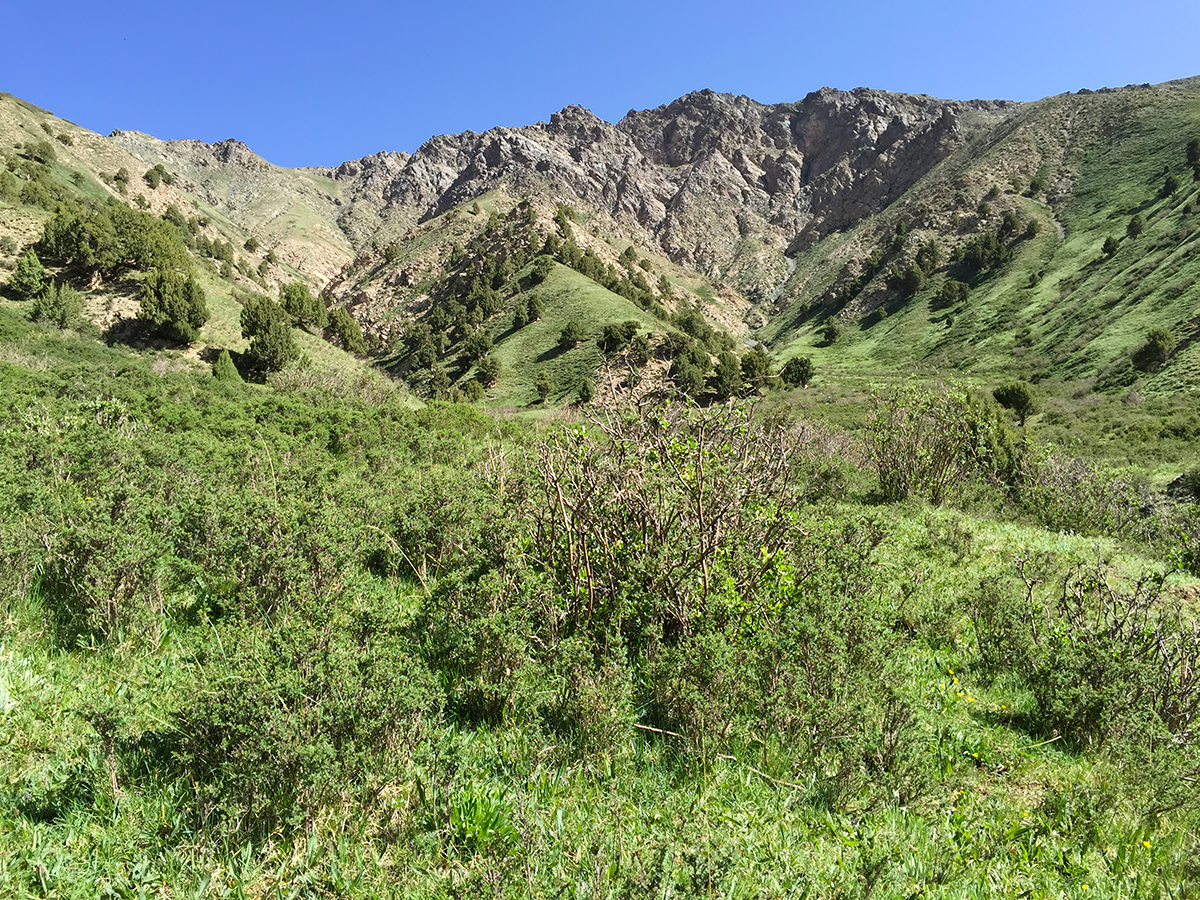
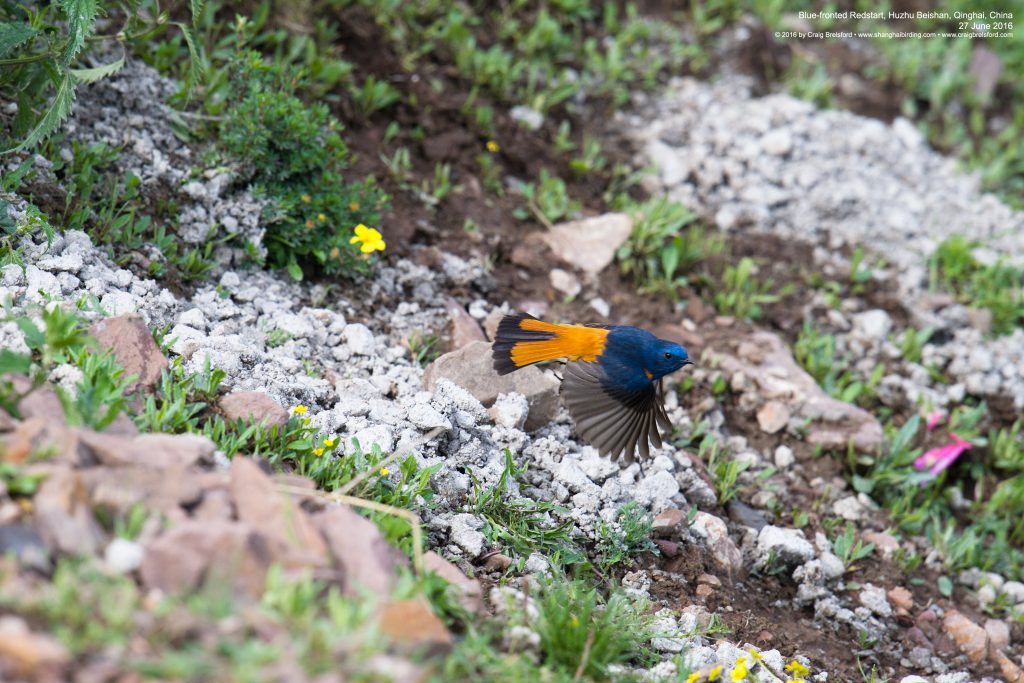
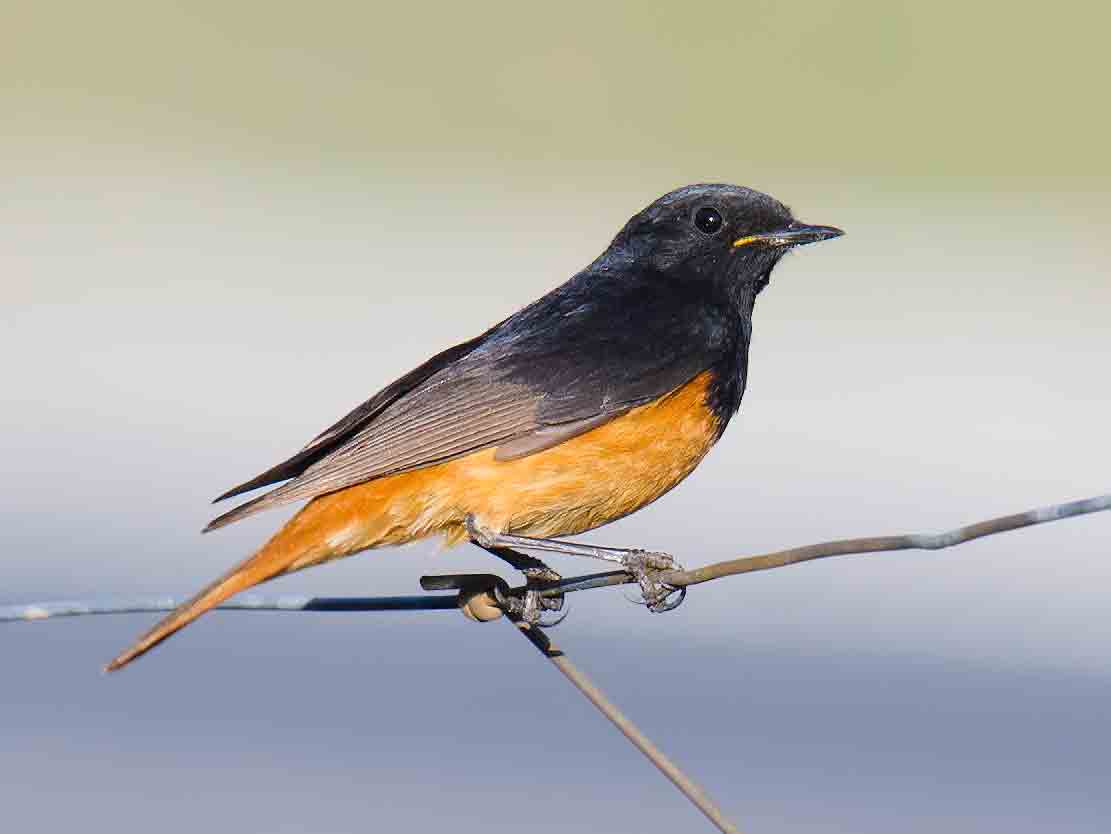
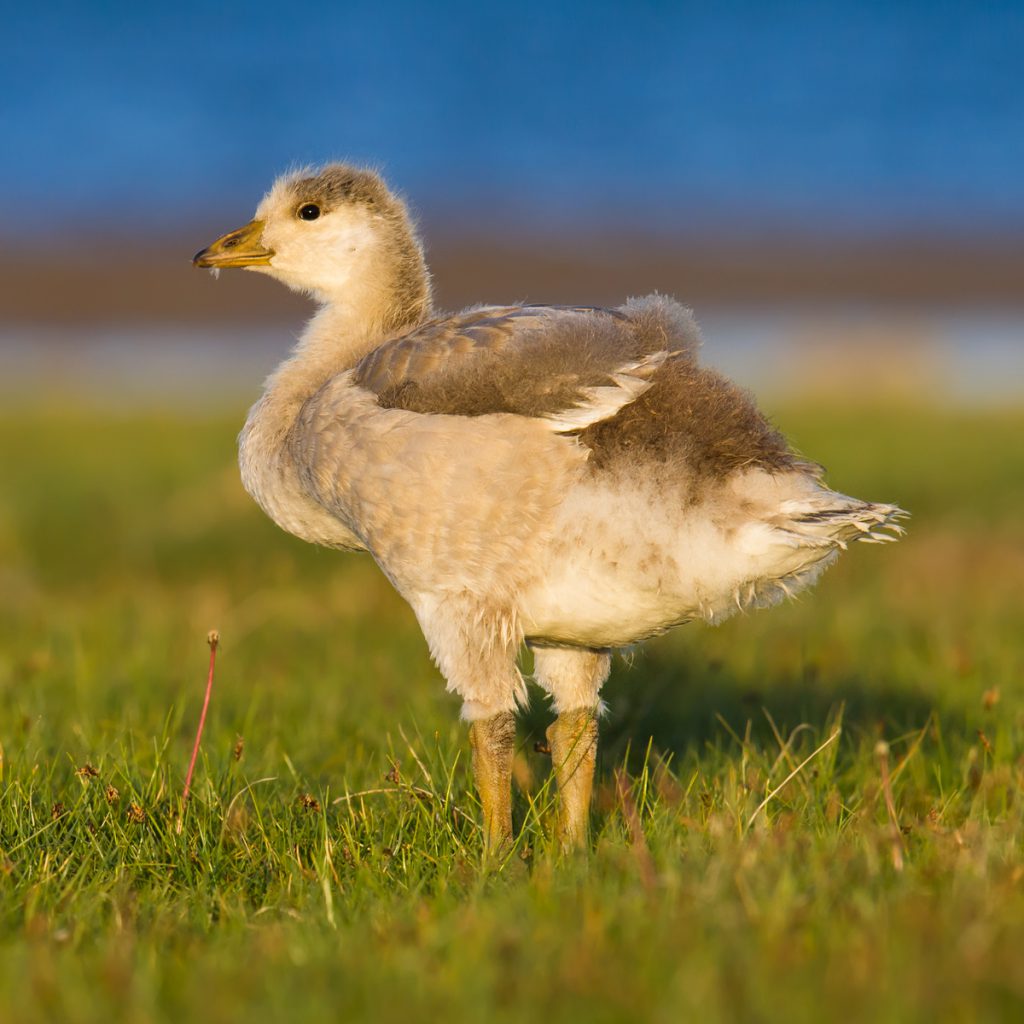
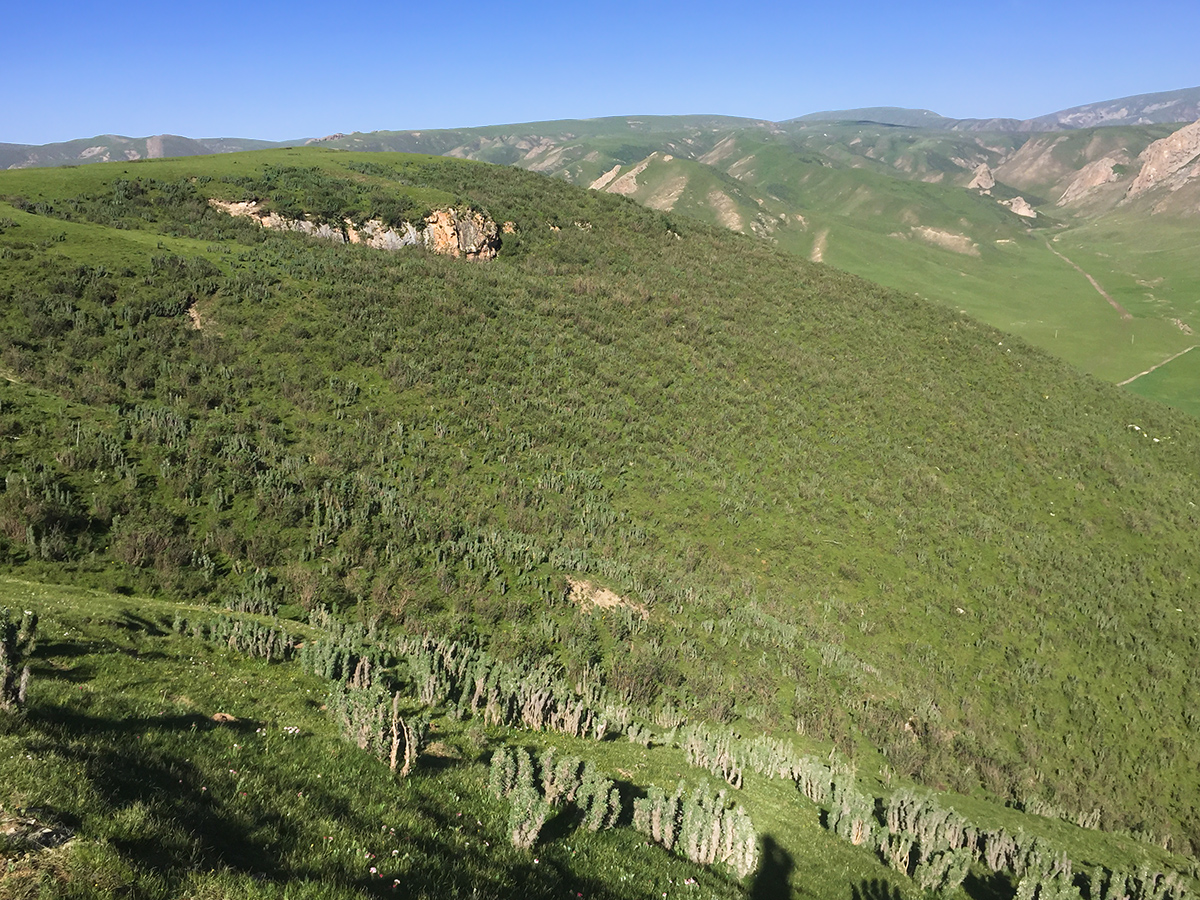
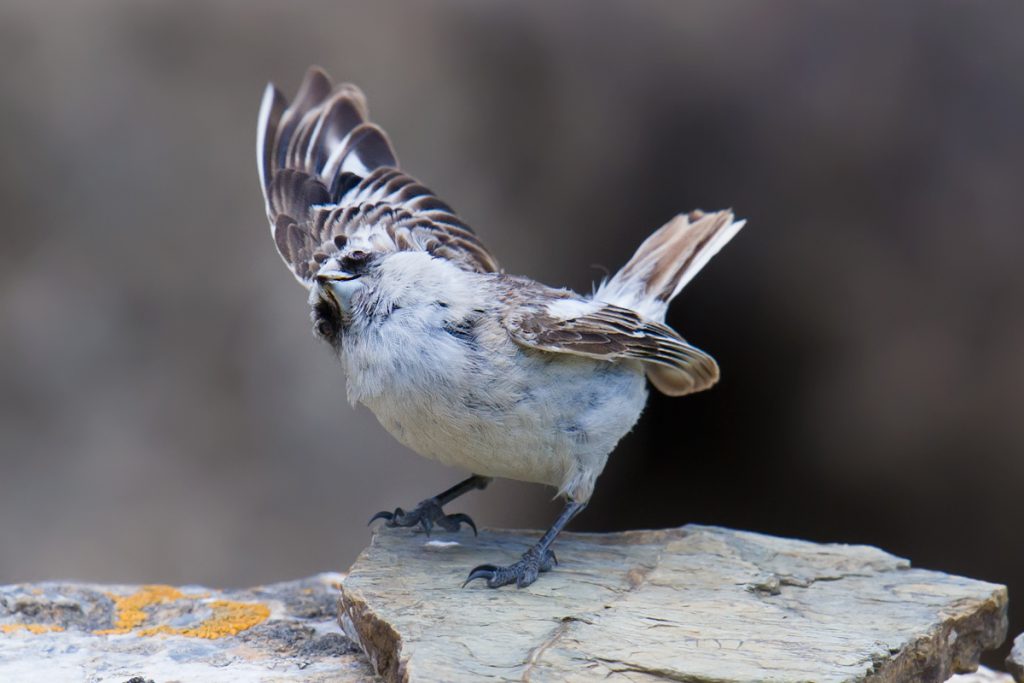
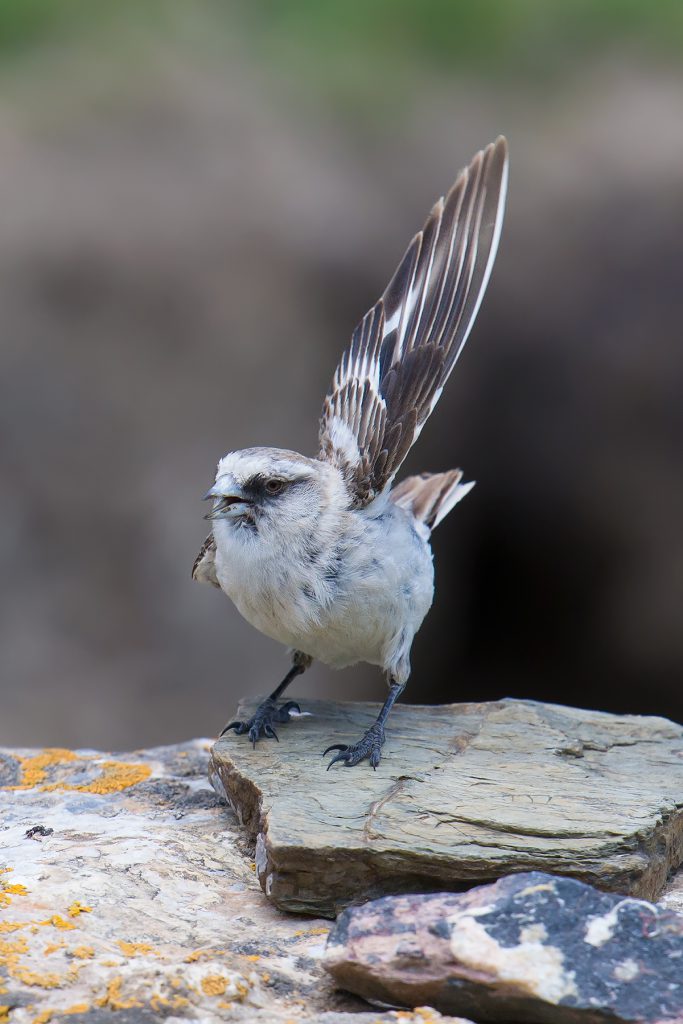
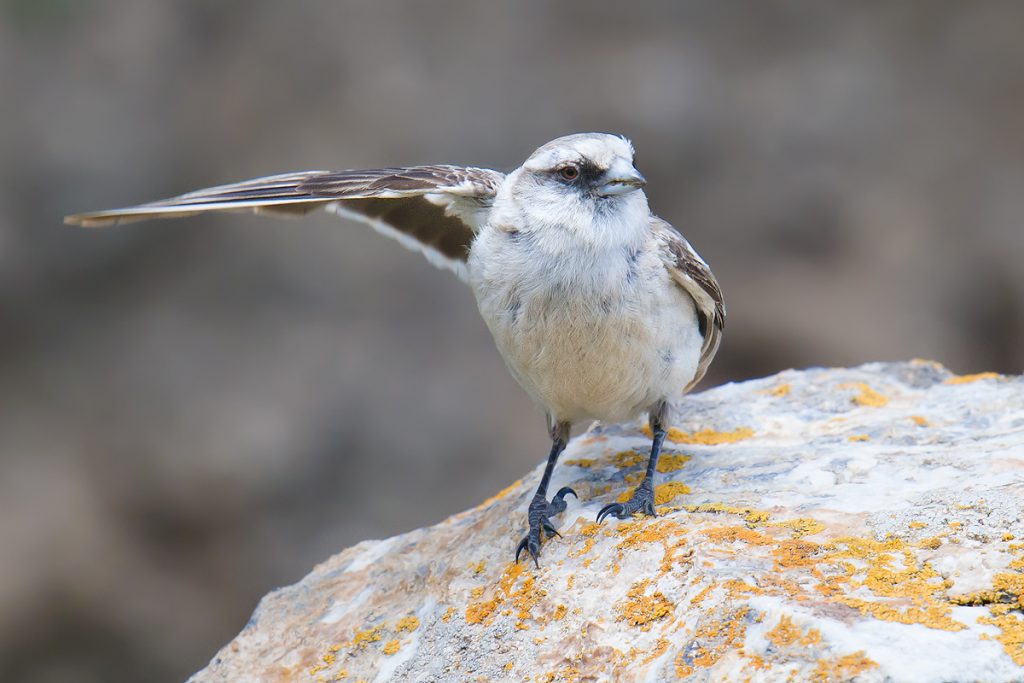
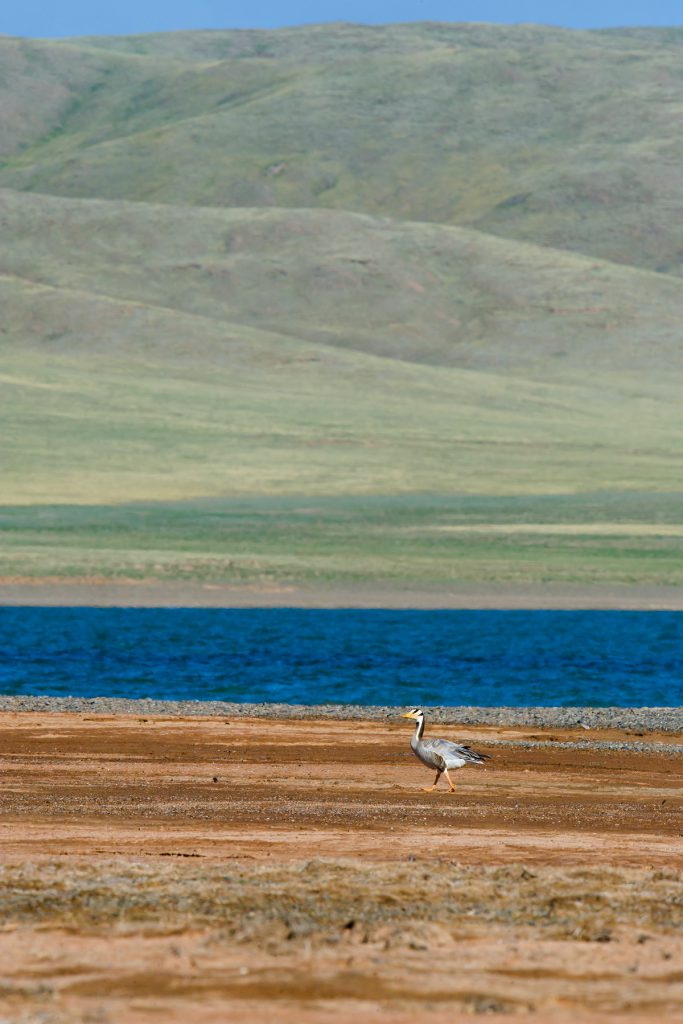
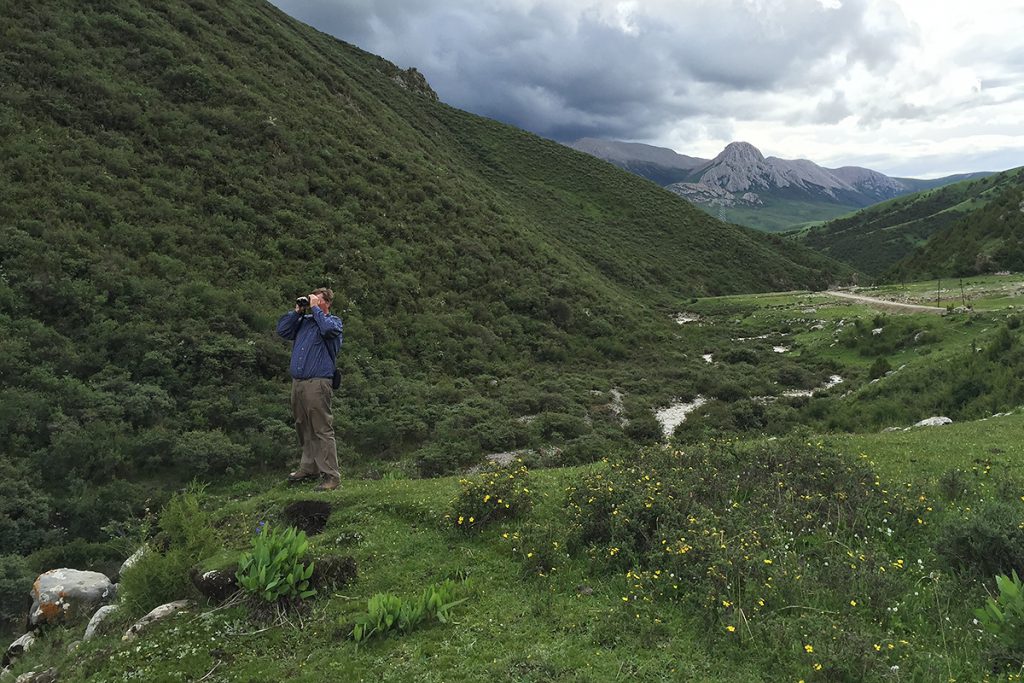
INDEX
shanghaibirding.com offers unparalleled coverage of birding in Qinghai. Below is an index to our posts on Qinghai. Reach us at info@shanghaibirding.com.

Summer-long Birding Expedition to Qinghai (Introduction): We birded Qinghai from June to August, spending the entire summer in the province. We noted classic Tibetan Plateau birds White Eared Pheasant, Black-necked Crane, White-browed Tit, and Przevalski’s Redstart. We explored little-birded northern Qinghai, discovering new locations for Przevalski’s Partridge, Tibetan Sandgrouse, and Gansu Leaf Warbler.
Birding Eastern Qinghai, from the Border with Gansu to the Border with Tibet (you are here)

Birding Qinghai’s Eastern Yushu Prefecture: We found Tibetan Lynx in the Kanda Mountains, discovered new birding sites, and at an art school in the wilderness immersed ourselves in Tibetan Buddhist culture. Among our highlights were Grandala and Red-fronted Rosefinch, the highest-breeding bird in the Palearctic. Our mammals included White-lipped Deer and Mongolian Five-toed Jerboa, and we saw evidence of attacks by Brown Bear.
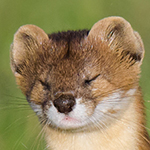
Birding the Qilian Mountains of Northern Qinghai: Our most important discovery was the poplar forests along the Heihe and Babao rivers, where we encountered woodland species Gansu Leaf Warbler and Chinese Thrush. Conifer forests yielded Black Woodpecker, and the scrub and pastureland gave us Eurasian Eagle-Owl, Siberian Roe Deer, and Mountain Weasel.
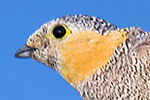
Forbidding (and Forbidden) Hala Lake: Defying a ban on foreigners, we birded the wild, remote inland sea in north-central Qinghai, elev. 4077 m (13,376 ft.). The lake yielded several interesting Qinghai records, among them Little Stint, Curlew Sandpiper, and Eurasian Whimbrel. Near shore, in perfect semi-desert habitat, we discovered flocks of Tibetan Sandgrouse.
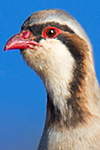
Birding the Remote Backcountry of Wulan County, Qinghai: Amid stunning scenery, we found Tibetan Wolf, discovered a new location for Przevalski’s Partridge, and around Lake Xiligou had Qinghai favorites Black-necked Crane and Tibetan Lark. The lake held a noisy super-flock of 4,600 Ruddy Shelduck, and Mongolian Goitered Gazelle were in the hills behind. Near Chaka we had Mute Swan.
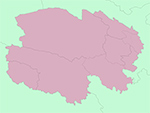
Index to Place Names in Qinghai: Study this list and plan your trip to Qinghai, the most exciting province for birding in China. We offer fascinating facts on famous places as well as sites little known, all with geographic coordinates. Read also our bibliography and use our index of eBird lists from the summer-long expedition.

Mammals and Birds of the Tibetan Plateau: Our team drove 3977 km (2,471 mi.) in 15 days, starting and ending in Golmud, Qinghai. In mountains as high as 5100 m (16,730 ft.), we found 98 species of bird. Mammals were the big stars. I watched a Tibetan Fox catch and devour a vole, we found 46 Tibetan Antelope and a Tibetan Wolf in Antelope Valley, and we saw dozens of Tibetan Wild Ass.
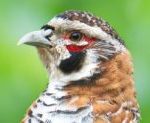
Tibetan Bunting Leads Parade of Tibetan Plateau Endemics in Qinghai: shanghaibirding.com founder Craig Brelsford led a three-person team on a 23-day trip to Qinghai. We covered most of the Tibetans (Tibetan Snowcock, Tibetan Partridge, Tibetan Babax, Tibetan Rosefinch, and Tibetan Bunting) and found Przevalski’s Finch near Qinghai Lake.
Qinghai in October: Jesper Hornskov and his team noted 178 species of bird in October, a time of year, Hornskov writes, “when few dedicated birdwatchers visit this unique land.”
Qinghai in the Age of Covid: Covid-19 complicated the trip, but watching Tibetan Wolf pups frolic made all the trouble worthwhile. We sampled a wide array of western China birds, among them Daurian Partridge, Pallas’s Sandgrouse, and White-winged Grosbeak.
In addition to coverage of Qinghai and our core area of Shanghai, shanghaibirding.com has extensive coverage of other areas of China, among them
Fujian
Northeast China
Sichuan
Xinjiang
Yunnan
Featured image: Michael Grunwell (L) carries spotting scope to view waterfowl on Eling Lake, near the source of the Yellow River in Guoluo Prefecture, Qinghai, 3 July 2016. To the right is Mark Waters, Michael’s old friend from England. In the background is our rented Mitsubishi Pajero. Craig Brelsford and Elaine Du were in Qinghai from 26 June to 21 August 2016. We spent the first two weeks of our expedition with Michael and Mark and noted 136 species. (Craig Brelsford)

